





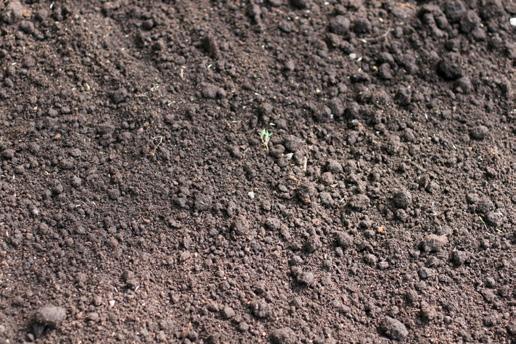













Capturing Maximum Genetic Potential

PUBLISHER: Jason Scott
Email: jason@jcsmarketinginc.com

EDITOR: Taylor Chalstrom
ASSOCIATE EDITOR: Cecilia Parsons
Email: article@jcsmarketinginc.com
PRODUCTION: design@jcsmarketinginc.com
4 26
Grapevine Red Botch Virus in Comparison to Grapevine LeafrollAssociated Virus
Phone: 559.352.4456
Fax: 559.472.3113
Web: www.progressivecrop.com
CONTRIBUTING WRITERS & INDUSTRY SUPPORT
Christopher Chen
8 24 18 30 32
How to Pay for the Upfront Investment of Whole-Orchard Recycling and Long-Term Return on Investment
14
The Costs and Benefits of Growing a Cover Crop in an Annual Rotation in the Lower Sacramento Valley

Phosphate vs Phosphite: Part Three
Humic and Fulvic Acids for the Field
Spatial Roguing: A Novel Leafroll Disease Management Response Building an Independent Crop Consultant Business
Tackling Pesticide Resistance of Spotted Wing Drosophila in Cherries
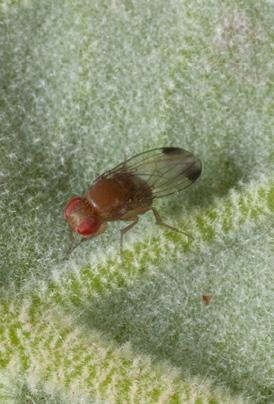
4 14 32
Ph.D., UCCE Viticulture Systems Advisor, Sonoma, Lake and Mendocino Counties

Marc Fuchs School of Integrative Plant Science, Cornell University
Vern Johnson CCA, President, Arizona Ag Solutions
JW Lemons CCA, CPAg, Verdesian Life Sciences
Sarah Light UCCE Agronomy Farm Advisor, Sutter, Yuba and Colusa Counties
Margaret Lloyd UCCE Small Farms Advisor, Yolo County
Mike Miller CCA/PCA, Senior Agronomist, Heliae Agriculture
Jhalendra Rijal
Ph.D., UCCE Area IPM Advisor, Northern San Joaquin Valley
Justin Tanner Ph.D., UCCE Viticulture Farm Advisor, San Joaquin and Stanislaus Counties
Surendra Dara Director, North Willamette Research and Extension Center
Kevin Day UCCE Pomology Farm Advisor, Tulare and Kings Counties
Elizabeth Fichtner UCCE Farm Advisor, Kings and Tulare Counties
Katherine Jarvis-Shean UCCE Orchard Systems Advisor, Sacramento, Solano and Yolo Counties
Steven Koike Tri-Cal Diagnostics
Jhalendra Rijal UCCE Integrated Pest Management Advisor, Stanislaus County
Mohammad Yaghmour UCCE Area Orchard Systems Advisor, Kern County
The articles, research, industry updates, company profiles, and advertisements in this publication are the professional opinions of writers and advertisers. Progressive Crop Consultant does not assume any responsibility for the opinions given in the publication.

Grapevine Red Blotch associated Virus (GRBaV) is the causal viral agent responsible for Grapevine Red Blotch Disease. This pathogen negatively impacts grape production by reducing fruit quality and yield. It can cause several physiological changes in vines, including changes in leaf color, reduced ripening speed and decreased fruit quality from reduced sugar and anthocyanin accumulation in the grapes. This reduction in fruit quality can lead to reduced market value, affecting the profitability of an impacted vineyard. The degree to which GRBaV will impact fruit quality and yield can vary from year to year within a vineyard but increases with the percent of infected vines contributing to the harvest. The exact mechanism by which Red Blotch reduces sugar accumulation in grape berries is still unclear; however, the available evidence suggests the virus affects the expression of genes involved in sugar transport and metabolism as well as in hormone signaling pathways that regulate sugar accumulation in grape berries.
Red Blotch disease was first discovered in Napa Valley, Calif. in 2008 when it was realized to be a new disease separate from leafroll which also causes similar red leaf symptoms as well as a reduction in fruit quality and yield. The similar-
ities between the effects of Red Blotch and leafroll viruses likely played a role at masking the presence of Red Blotch virus until efficient virus screening techniques for GRBaV were commonly employed. At the point of its discovery, Red Blotch disease was not a newly emerged viral disease but rather a viral disease new to our recognition as a viral disease. Due to the misidentification of GRBaV in symptomatic grapevines, the virus may have been widely spread across California by the time a screening procedure was developed to identify its presence in plant tissues. To this point, Red Blotch virus was detected in herbarium samples collected several decades before the formal recognition of the virus. Red Blotch virus is the only member of the genus Grablovirus within the family Geminiviridae and has been separated into at least two clades of distinct strains of the virus. While originally recognized in California, it has since been found in several grape-growing regions worldwide. Grapevine Leafroll-Associated Disease, on the other hand, is caused by one of six viruses from the family Closteroviridae. Grapevine Leafroll-associated Virus (GLRaV) is one of the most important viral diseases affecting grape production worldwide. Of the six viruses associated with leafroll disease, GRLaV-3 in the genus Ampelovirus is the
most predominant; GLRaV-2 has also been noted as impacting large numbers of California’s vineyards.
Often described as beautiful fall color by visitors to the vineyard around harvest time, the development of red leaves in red grape varieties is a sign the vines are not healthy. The most prominent visual symptoms of Red Blotch are reddish-pink blotches or patches that appear on the leaves of infected red grape varieties. These blotches usually appear later in the growing season, usually after véraison, first appearing on older leaves near the bottoms of shoots and later developing on leaves higher up the shoot. These blotches are irregular in shape and often have a mosaic pattern. Foliar symptoms of GRBaV and GLRaV are visually similar, and both result in red- or yellow-toned tissue of the leaf blade depending on the grape cultivar. With Red Blotch, the leaf veins also turn red which is in contrast with leafroll in which the veins remain green. Another subtle difference is that Red Blotch does not distort the shape of the leaf causing the leaf blade to remain flat while Leafroll-associated viruses can cause some leaf blades to roll down along the margins, resulting in a downward curl. When a vine has Grapevine Red Botch
Virus and a Grapevine Leafroll-associated Virus, leaf symptoms usually present as typically expected for Grapevine Leafroll associated Viruses with leaves showing green veins and some degree of leaf rolling. Towards the end of the season, symptomatic leaves from either virus may turn completely red, complicating visual diagnosis. In white varieties of grape, both viruses are much less conspicuous as the leaves do not turn red but may present in a subtle, yellow-chlorotic, patchy pattern.
Both viruses can be transmitted through propagation of infected planting material. The use of CDFA-certified virus-tested vines is an important initial step in excluding viruses in your vineyard. As there is currently no cure for vines once infected with Red Blotch
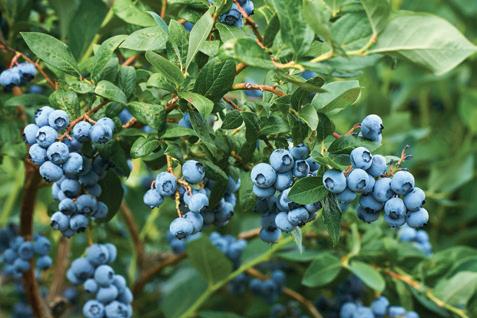


or Leafroll, the use virus-free planting materials and the removal of infected vines is the first line of defense in virus management. Scouting and monitoring vineyards for red leaf symptoms in the fall is essential for early detection. PCR testing can be used to confirm viral presence in visually identified symptomatic vines if there is any doubt about the symptoms and is especially useful for confirming virus status of white grape cultivars. Once identified, infected vines should be rogued from the vineyard to reduce pathogenic inoculum and prevent them from serving as a source of virus that could inflect healthy vines. Vines identified in the late part of the growing season should be removed before the start of the next season to minimize the spread of the virus by insect vectors.

ContinuedfromPage5
PCR-based testing methods are the standard for determining virus status of individual vines with a high degree of accuracy but becomes cost-prohibitive at commercial scales. New approaches to virus identification are being developed to allow for screening of vines rapidly and accurately within a whole vineyard. The use of drone-based hyperspectral imaging has been demonstrated to be more accurate at identifying vines infected with Red Blotch or Leafroll compared to visual scouting by experts when coupled with machine learning methods. Another approach in development involves the use of dogs trained to detect virus in vines. Other methods in development include non-destructive wavelength transmission and reflection to identify foreign organisms within the vine without damaging the plant.
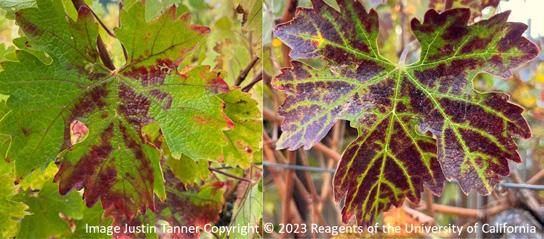

The three-cornered alfalfa hopper (Spissistilus festinus, TCAH) is currently the only confirmed vector of Red Blotch virus. It is an insect that can feed on many plant species including grapevines and is widely distributed throughout the U.S. Plants such as alfalfa and other legumes serve as the preferred hosts for TCAH; however, as these plants dry up over the season, TCAH will migrate onto less preferred hosts such as grapevine. This pattern of micro-migration may be particularly problematic in vineyards where annual cover crop decline occurs near the beginning of vegetative growth for grapevines. TCAH can acquire GRBaV from feeding on infected plants and subsequently spread the virus to healthy vines. However, studies investigating the vector-capacity of TCAH have found they are not good at spreading the virus. TCAH is a circulative and non-propagative host where the virus does not replicate within the insect but is transferred into the salivary glands. TCAH requires an extended acquisition period of about 10 days to uptake the virus while feeding on infected vines followed by an extended inoculation access period of about four days of feeding on healthy vines to spread the virus. As grapevines are not the preferred host, TCAH populations usually remain low within vineyards and are mainly driven by the presence of legumes in cover crops. Timely management of cover crops by tillage before TCAH reaches adulthood may help reduce population sizes and limit virus spread by the alfalfa hopper. Additionally, removing unmanaged grapevines from the perimeter of vineyard areas is helpful as these vines can act as virus reservoirs and are particularly at risk of infection in riparian areas where insect populations may be higher. The work of identifying and confirming insect vectors of Red Blotch is ongoing, and there are many other insects identified as potential vectors currently under investigation.
Due to the feeding nature of TCAH, alternative plant hosts of GRBaV should be identified in California and managed to reduce potential inoculum sources near vineyards. To date, few endemic plant species within California have been tested to see if they can harbor GRBaV. However, researchers tested 13 species of woody, herbaceous plants from riparian areas which tested positive for GRBaV and identified two positive hosts: Himalayan Blackberry and a wild grapevine hybrid (V. californica x V. vinifera). In certain regions of California, a higher number of inoculum sources and alternative hosts for GRBaV may lead to higher pathogen pressure in vineyards with Red Blotch symptoms. With the potential for other insect vectors being able to transmit GRBaV, it is important to understand which plants in vineyard-adjacent ecosystems can increase risk of Red Blotch transmission into grapevines.
For Leafroll, several species of mealybugs (family Pseudococcidae) and scale insects (family Coccoidea) have been shown to be competent vectors. However, the most important vector of
GLRaV is the vine mealybug (Planococcus ficus), an invasive species first detected in California in the mid-1990s which can have up to seven generations in a single growing season. The vine mealybug requires a period of as little as 15 minutes of feeding on an infected vine to acquire Leafroll. Because of the efficiency of virus uptake by the vine mealybug and the rapid nature of its reproductive strategy, in areas where vine mealybug is present, Leafroll has the potential for rapid spread. The most effective management strategy for vine mealybugs involves an integrated approach which includes the use of biological, cultural and chemical control methods as well as managing ants which protect mealybugs from their natural enemies. The parasitoid wasp Anagryus pseudococci and other beneficial species have been shown to successfully reduce vine mealybug infestations to manageable levels. A detailed guide to this approach is available at ipm.ucanr.edu/agriculture/grape/ vine-mealybug/.
In summary, both Red Blotch and Leafroll viruses can cause significant impacts to fruit quality and yield. Both viruses will cause symptoms of red leaves in red grape cultivars; however, slight differences between these symptoms can be visually identified and useful in distinguishing between the two. Once symptomatic vines are identified, PCR testing can confirm virus status. While both viruses can be vectored through the propagation of infected material, there’s great differences in the efficiency of virus spread by insect vectors. For Red Blotch, the three-cornered alfalfa hopper, requires an unusually long acquisition time of about 10 days of feeding on infected vines before it can spread the virus compared to the alarmingly quick uptake of Leafroll by the vine mealybug in around 15 minutes. Other potential insect vectors of Red Blotch have been identified and are currently under investigation. Additionally, the three-cornered alfalfa hopper usually doesn’t reach high populations within vineyards as the grapevine is not
it’s preferred host plant; while the vine mealybug, on the other hand, due to its prolific reproductive strategy has the potential to reach very high numbers if left untreated in the vineyard. Once infected with Red Blotch or leafroll, there is no cure, and removal of the vine is the only sure way to prevent future spread to neighboring vines. Monitoring GRBaV symptomatic grapevines and removing them from the vineyard quickly may be the best approach to limiting the spread of Red Blotch at the moment. With research ongoing and without a clear understanding of how the virus can rapidly spread, reducing inoculum sources is a proven, preventative strategy.
Figure 4. Vine mealybugs on the trunk of a grapevine revealed after removal of loose bark. Notice how the mealybugs are surrounded by ants.
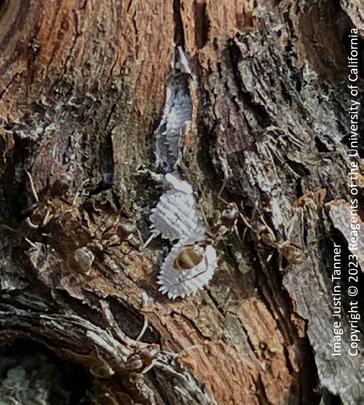
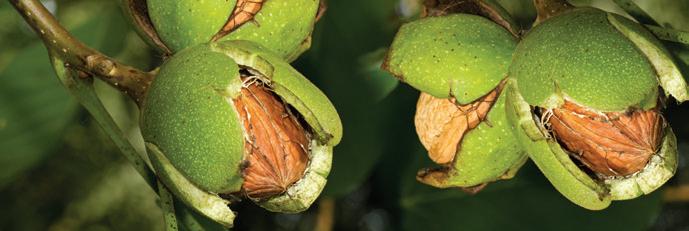
Reduce
Improve crop quality No visual residue www.sym-agro.com

Whether you’re harvesting nuts or fruit, all orchards have one thing in common at the end of their productive life cycles: Growers need to have a plan for tree removal.

Burning trees or selling wood chips to fuel-burning power plants is becoming a less viable option. Many power plants have gone out of business, and air regulations encourage or force growers to seek alternative disposal options.
Market shifts and policy changes have resulted in a relatively new concept: whole-orchard recycling (WOR). This regenerative agriculture practice encourages growers to use end-of-life orchards to improve organic matter and soil quality, water productivity and crop yield potential.

Yet, any grower who’s new to WOR will ask, “How much will this cost me?”, because the bottom line matters.

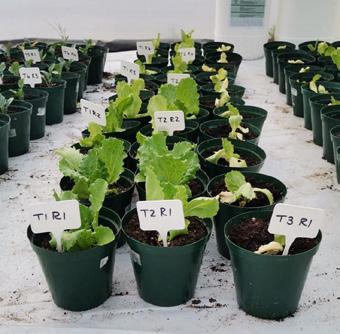
Afrikelp:

• supports crops under stressful conditions.
• is synergic when it’s blended with, fungicides, phosphite, or foliar fertilizers.
While more expensive than burning, there are many funding opportunities for growers who choose WOR. Plus, the long-term return on investment for this regenerative agriculture practice is well worth the outlay.
The Process: Recycle Your Orchard
Whole-orchard recycling turns
low-yielding and unproductive trees into organic matter to support the next orchard. The process is relatively simple and straightforward.
Excavate the trees from the ground. Try to remove as much of the roots and the crown as possible from these aging and low-yielding trees.
Grind wood chips into either 2-inch or 4-inch screen size. 2-inch screen sizes
are less likely to interfere with orchard floor management activities and less likely to harbor pathogens. They’ll also be easier to spread and incorporate into the soil.
Load wood chips into a modified manure spreader. This is the easiest way to disperse chips evenly across the orchard floor. Growers may consider 1-footdeep dispersion of chips near piles, and 1-inch-thick dispersion in the far corners of the orchard.
Deep rip soil. A 5- to 6-foot-deep rip can break up compaction layers and pull out any remaining roots.
Smooth out ruts created by the ripper and incorporate chips. Growers can use a stubble disk, plow or rototiller to smooth out orchard floors and mix chips with soil.
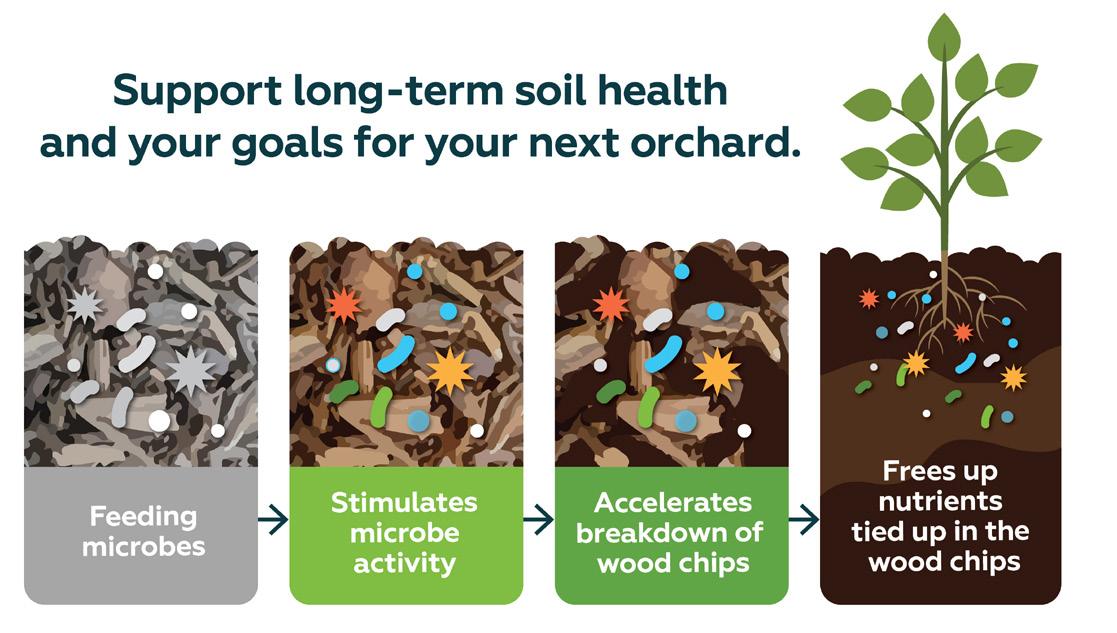
Fumigate for extra protection. Experts suggest fumigating between 18 and 24 inches deep.
Almond Board of California, a leader in the WOR space, encourage growers to take a year off before replanting. Ripping, mulching, spreading, incorporating, fumigating and irrigating can take many months to complete.
The process is relatively simple, yet WOR is more expensive than traditional endof-life management for orchards. Researchers at UC Davis estimated WOR can cost $125 to $810 more per acre than burning; yet, you don’t have to pay the bill on your own. There are many organizations that provide funding for this regenerative ag practice.
Here’s how to offset the up-front cost of WOR:
For Growers in the San Joaquin Valley: The Open Burning Incentive Program Growers in the San Joaquin Valley have a unique opportunity to apply for funding when opting to recycle their orchards. $220 million has been set aside for growers choosing WOR.
The funding grants $600 per acre to orchards and $1,300 per acre for vineyards.

For California Growers: California Department of Food and Agriculture Funding
The California Department of Food and Agriculture’s Healthy Soil Initiative gave many growers funding for their no-till practices in their orchards and vineyards starting in 2021.
Keep an eye on their site for when applications open for 2024 funding.
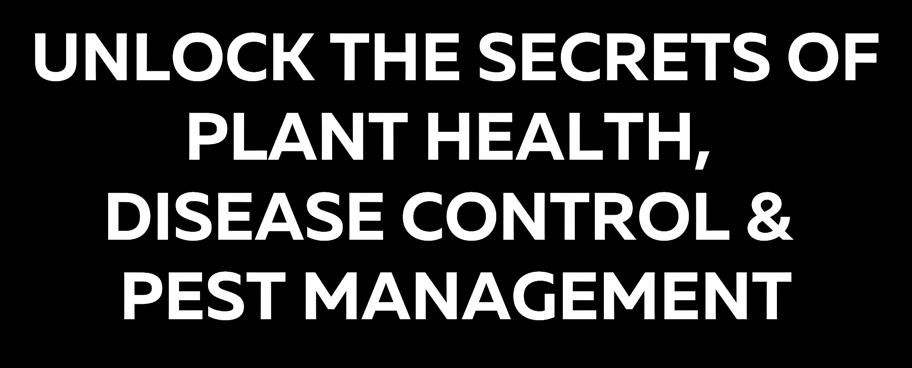

For California Growers: Check with Your Local USDA-NRCS for Incentives
Your local U.S. Department of Agriculture Natural Resource Conservation Service may provide incentives for WOR through the Conservation Stewardship Program.
For California Growers: Environmental Quality Incentive Program (EQIP))

Another program hosted by the USDA-NRCS, EQIP was created to provide financial and technical support to those
ContinuedonPage12

‘WHOLE-ORCHARD RECYCLING TURNS LOW-YIELDING AND UNPRODUCTIVE TREES INTO ORGANIC MATTER TO SUPPORT THE NEXT ORCHARD.’
using regenerative agriculture practices with direct ties to environmental benefits. WOR improves air quality and soil quality, so orchard owners qualify for funding.
When you sort out the financing to recycle your orchard, you can look forward to the long-term benefits and return on investment. Here’s a short list of the perks WOR offers your future orchards.
Burning releases carbon stored in woody debris. When this happens, carbon is lost forever and can’t support your future trees. Long-term and short-term studies suggest recycling trees can add carbon, soil nitrogen and organic matter. 22 to 40 tons of organic C is returned to the soil per acre when recycling trees.
This makes your unproductive trees a short-term and long-term carbon provider. Up to 30% of carbon can be released as CO2 in the first year after recycling. The rest slowly degrades, providing a continuous nutrient source for new orchards. Plus, when you incorporate wood chips into the soil, it enhances the soil structure and texture, improving tree root growth. Healthier soils have been found to dramatically improve the odds for a healthier orchard and higher yields.
As mentioned, burning trees releases carbon, but chipping and incorporating trees into your soil stores carbon. This can improve your community’s air quality and reduce greenhouse gas emissions.
Since WOR is great for your soil, it’s also
great for your water productivity. When trees are chipped and incorporated in the soil, it increases water use efficiency, infiltration, aggregation and water holding capacity.
While drought conditions have improved in California this year, growers would be smart to make the most of their water regardless of precipitation given that great water management can improve tree resilience.

With healthy soil and improved water use, the health and productivity of an orchard increases, and the crop yield potential increases, too. One study at UC Davis found a second-generation almond orchard had a 20% increase in yield when WOR was coupled with regular nitrogen (N) and irrigation regime.
Pro Tip: Maximize Your Crop Yield Potential with a Carbon-rich Microbial Food Want to help your new trees access nutrients from your wood chips sooner? Maximize your WOR investment with a carbon-rich microbial food.
Start by conducting a test with a trusted
crop adviser after tilling to find out the diversity and activity of your soil microbes. In most farm soils, 75% of soil microbes are inactive.
An active, healthy soil microbiome can:
• Improve soil texture and structure
• Improve water holding capacity by up to 10%
• Optimize fertilizer applications
• Optimize manure and compost applications
• Mitigate abiotic stress throughout the season
• Fight soilborne diseases
• Boost crop yield performance and ROI
Feeding microbes stimulates microbe activity and accelerates breakdown of wood chips to free nutrients tied up in the wood chips.
By feeding your soil microbes a carbon
‘THE TIMES ARE CHANGING, AND THOSE WHO FIND A WAY TO MAKE WOR WORK FOR THEM WILL REAP THE BENEFITS IN THEIR CROP YIELDS TO COME.’
product, you can make the most of the cost of WOR and support long-term soil health and your goals for your next orchard.

WOR is currently supported by air regulators and regenerative agriculture specialists, especially in areas of California like the San Joaquin Valley. There will be an 80% to 90% reduction in San Joaquin Valley orchard burning, according to CARB’s Chief of Air Quality Planning and Science Michael Benjamin.
• Last year, nut orchards with more than 500 total acres were unable to burn.






• This year, operations with more than 200 can no longer burn.



• By 2025, all ag burning will be banned except for special situations, like disease- or pest-ridden fields.
This is to support better air quality for the Valley. With over 9 million acres of farmland in California, burning will likely become less encouraged throughout the state year after year.
The times are changing, and those who find a way to make WOR work for them will reap the benefits in their crop yields to come. California growers will likely be on the forefront of this shift, continuing to produce tree crops that feed the U.S. By using the financial support available for WOR, growers can make the most of their aging orchards and support their future trees.
Comments about this article? We want to hear from you. Feel free to email us at article@jcsmarketinginc.com

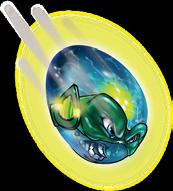


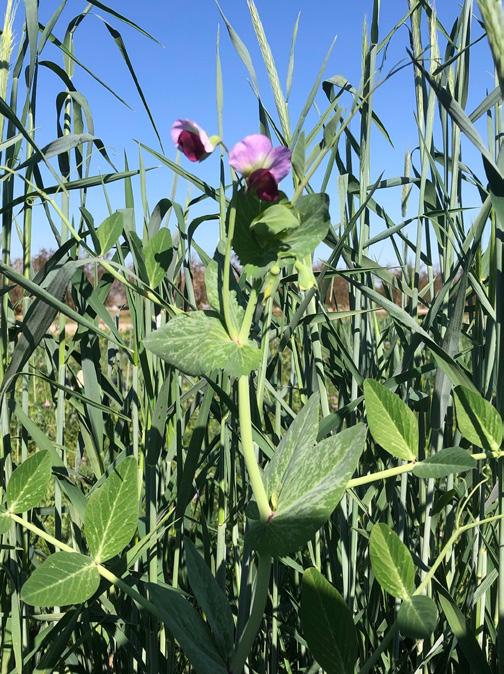

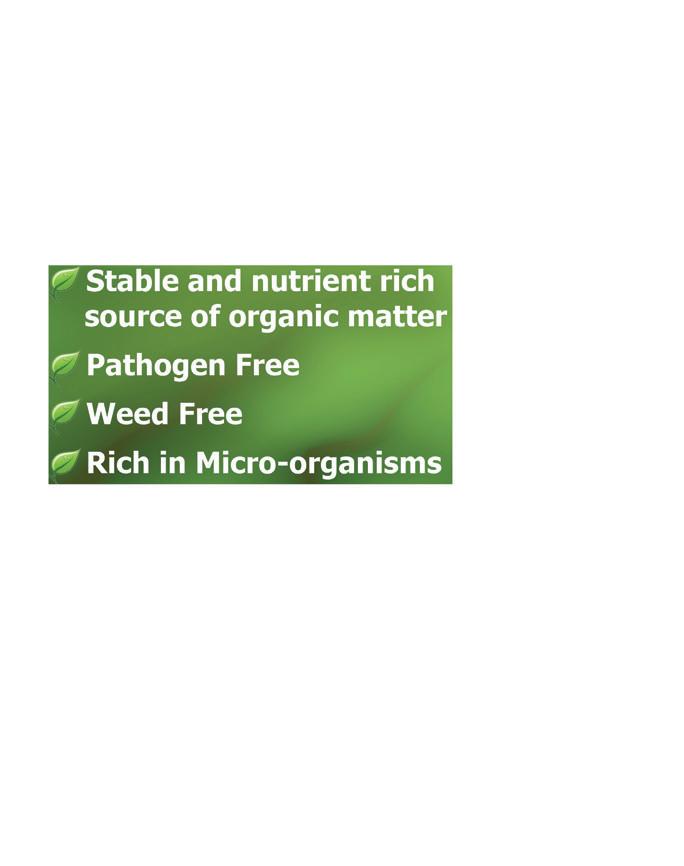
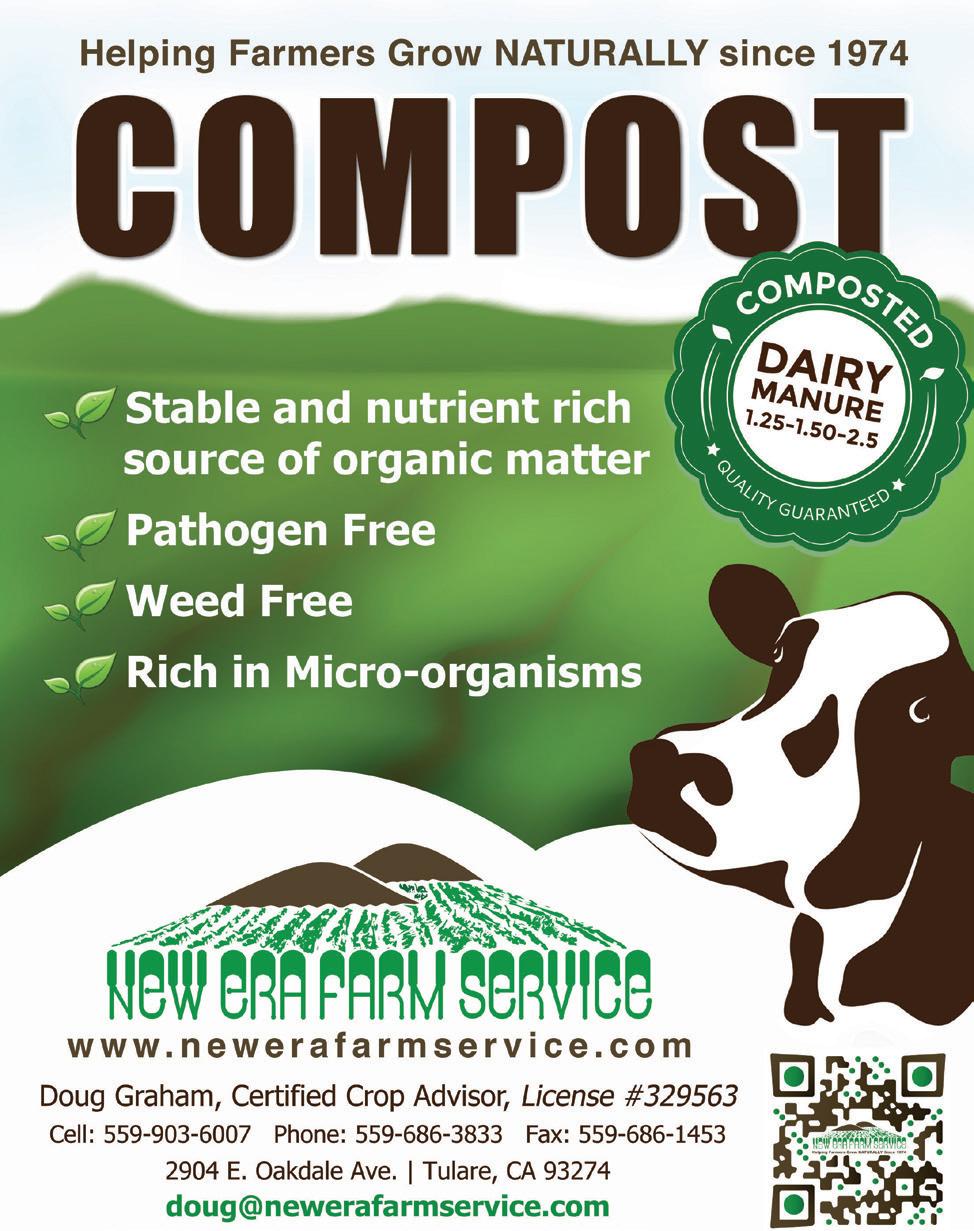
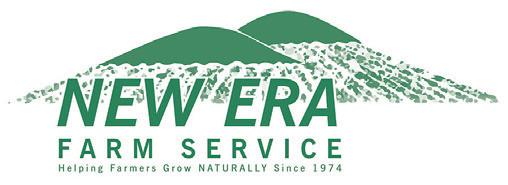

Soil health is defined as the continued capacity of soil to function as a vital living ecosystem that sustains plants, animals and humans, according to USDA. This includes providing space for root growth and respiration; moving water rapidly and allowing water to infiltrate in the soil profile; storing water for future crop use; and providing habitat for soil organisms including soil microbes. When we build soil health, we are increasing the capacity of our soil to do the jobs we need it to do, which can improve crop production.
Cover crops are plant species selected and grown for their protective and beneficial contributions to soil health. They help meet three of the soil health principles: maintaining a living root, increasing plant diversity in the rotation and maintaining soil coverage. Cover crops help keep ground productive in the long
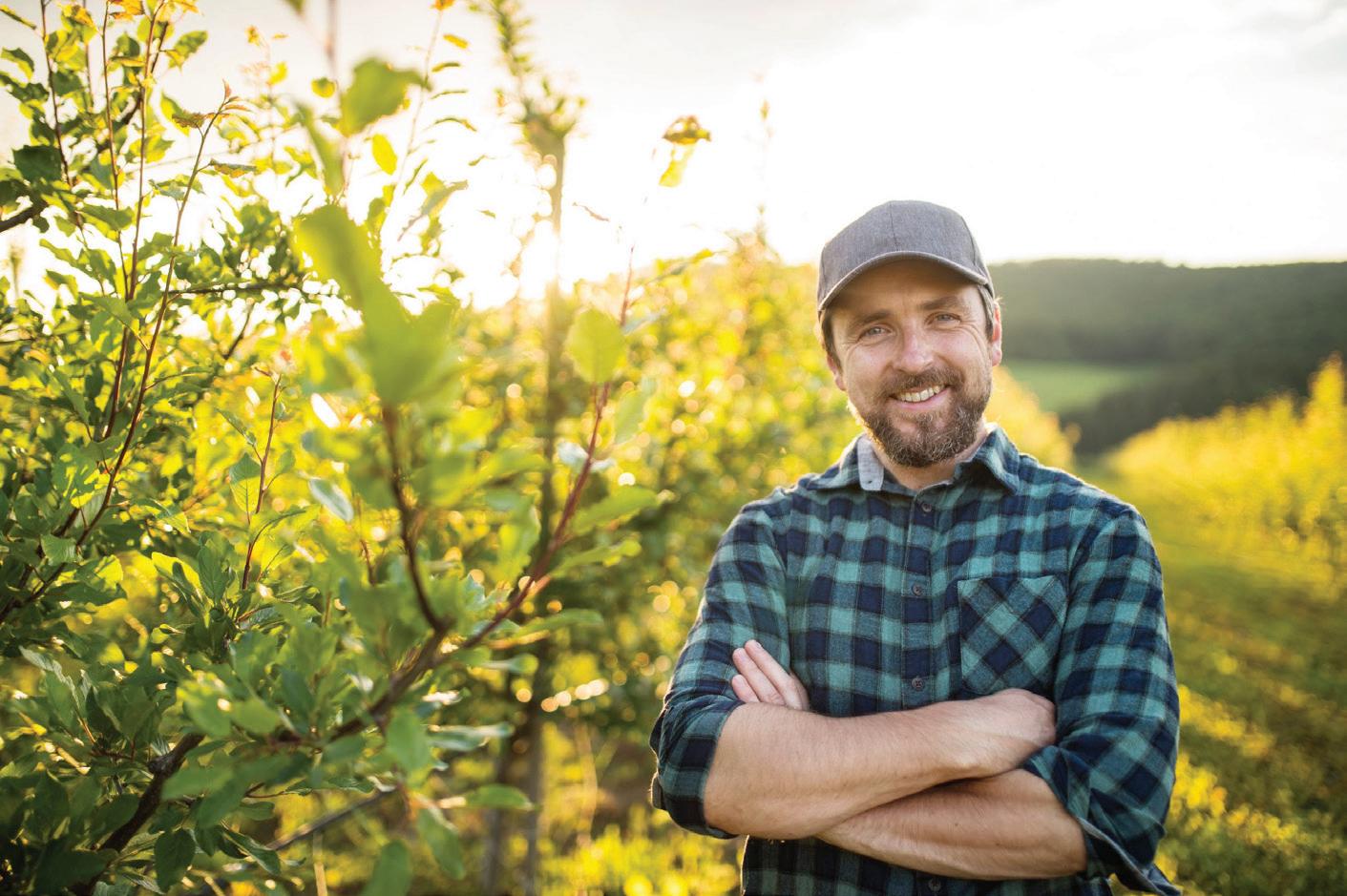
crop biomass builds soil organic matter, which can improve nutrient cycling and retention, water holding capacity, water penetration and infiltration. Both cover crop residue and roots provide essential sources of food for soil macrofauna and microbial life. Soil microbial communities contribute toward disease suppression and nutrient cycling, especially nitrogen. Soil organisms are also essential for building and maintaining soil structure including aggregate stability and soil porosity. Improved soil structure in the form of better soil water holding capacity may reduce irrigation applications in future years.

All these potential benefits come with a cost to produce; a 2022 UCCE Cost Study estimates that to be $156/acre. This cost study models the planting and management of a winter cover crop in
er, sorghum and/or dry beans as well as other summer annual crops. This study models a field following harvest of processing tomatoes in the fall and a planned rotation into a spring-planted field crop. Despite the benefits, cover cropping is not realistic for all operations. From timing and logistics to equipment, there are numerous reasons why a farm cannot adopt this practice. Farmers and researchers are exploring more ways to cover crop than the scenario in this study.
The useability of this study in different regions or operations lies in understanding the costs accounted for in the $156/acre. The costs include cash and labor costs associated with seed, legume inoculum, planting and termination activities (mowing and discing two times). Because cover crops are part of a rotation between cash crops, some ContinuedonPage16
charged to the cover crop. Preplant practices, including ripping the furrows, disking and rolling two times and landplaning, are considered preparatory practices for the cash crop, not the cover crop. Historically, cover crops are exclusively rainfed. However, variation in annual winter rainfall amount and timing is increasingly common. Therefore, two irrigation events are included in one out of every three years. Make note that the cost of water varies widely across regions and operations and may differ considerably from $5.42 per acre inch used in the study. This study includes a sprinkler irrigation system but assumes the equipment was not purchased for cover crop production. Thus, only labor and water costs are attributed. Each table has a “Your Costs” column in which users can add any additional costs for their operations. For example, renting sprinkler irrigation equipment will have higher irrigation costs than those listed.
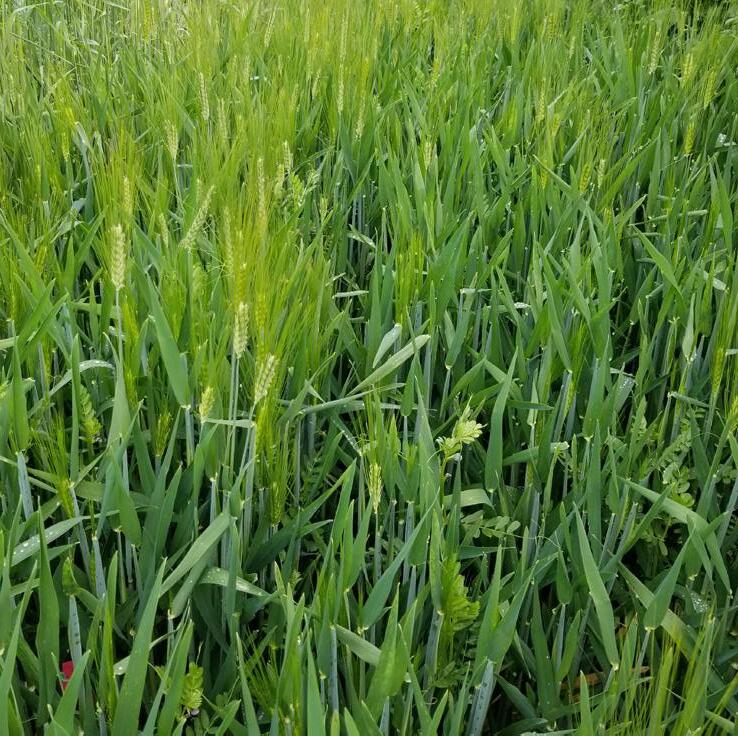
Despite the multiple benefits from cover crops, nitrogen is the only economic return included in the study. We estimate 100 pounds of nitrogen are fixed per acre by the mixed legume-cereal cover crop, and 30% of this nitrogen mineralizes and becomes plant-available to the following crop in the first season. Thus, 30 lb/acre of nitrogen are attributed as a return from the cover crop at a rate of $1.20/lb ($36 return). Both the amount of plant-available nitrogen and value of nitrogen are conservative estimates. Few studies document the other benefits in dollars. Cover crops can increase soil workability, reducing labor and fuel costs for field work. Planted in rotation or in otherwise fallow fields, cover crops can suppress winter weeds. Weed suppression can reduce the need for herbicide sprays used to maintain a winter fallow. This can save up to $65/ acre, including materials, fuel and labor. Cover crops can capture residual soil nitrogen to reduce nutrient runoff and leaching. This may ultimately contribute to the maintenance and protection of downstream water quality while simultaneously returning nitrogen to the subsequent crop post-cover-crop-incorporation. Recruitment of beneficial insects and pollinators is another benefit

with potential economic returns among others.
Maintaining the viability of our California farmland is critical for our food supply and protecting our agricultural economy. Cover crops can play a pivotal role in building and maintaining soil health and ensuring land remains farmable for the long term. The true cost of cover crops is complicated given the hard-to-measure benefits that dominate
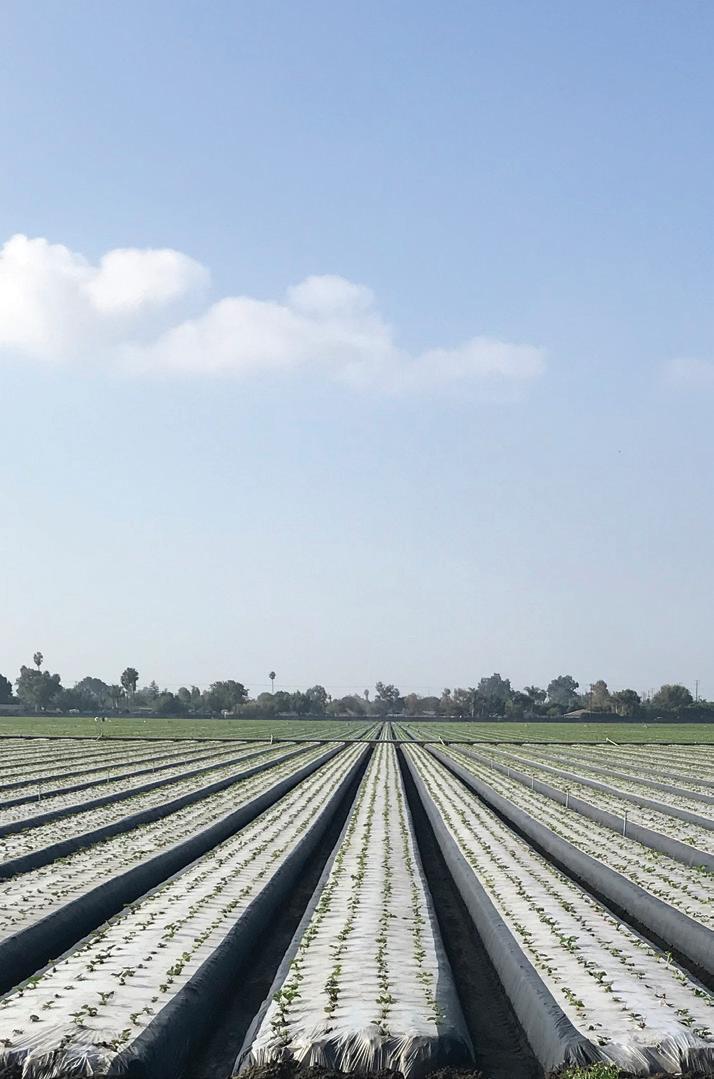
the decision to grow cover crops. Nonetheless, accessing these benefits through a cover crop comes at an estimated cost of $156/acre. For some, that may be a screaming deal. For others, this practice may not be logistically possible or economically feasible.

Comments about this article? We want to hear from you. Feel free to email us at article@jcsmarketinginc.com








Visit:www.belchimusa.com




















"
‘Planted in rotation or in otherwise fallow fields, cover crops can suppress winter weeds. Weed suppression can reduce the need for herbicide sprays used to maintain a winter fallow. This can save up to $65/acre...’
 By JW LEMONS | CCA, CPAg, Verdesian Life Sciences
By JW LEMONS | CCA, CPAg, Verdesian Life Sciences
Phosphite has been a controversial topic for years. Its use and benefits are argued in hundreds of research papers across the world’s scientific communities. Is it a fertilizer, a biostimulant or a fungicide? These questions are discussed in multiple university research results. I believe if we look carefully, we can conclude phosphite serves all three functions. As with everything we do with chemicals and nutrition, we need to be aware of possible negative effects. We also need to determine how we are using the phosphite materials and the results we are seeking.
Phosphite (PO33-; Phi), a reduced form of phosphate (PO43-; Pi), is widely marketed as either a fungicide or fertilizer or sometimes as a biostimulant. Because crop consultants, growers and distributors see the product marketed in all three ways, it can cause confusion. Each designated use will most likely be tied to the phenology (growth stage) of each treated crop. Timing is critical to determine which effect we are seeking. We have addressed phosphite in a nutrition role in Part One of this article series. Part Two spoke of Phi in terms of a biostimulant. In this article, we broach the controversial topic of Phi as a fungicide.
Usage
Phi salts can be used as a biodegradable fungicide to protect plants against Phytophthora dieback. It is usually applied as potassium phosphite, derived from phosphorus acid neutralized with potassium hydroxide. Calcium and magnesium phosphite may also be used. One way Phi works is by boosting the plant’s own natural defenses and thereby allowing susceptible plants to survive within Phytophthora dieback infested
Phosphite can serve as a fertilizer, biostimulant or fungicide depending on the growth stage of the crop it’s applied to.
Phosphite can act as a fungicide by triggering antifungal metabolism and/or inhibiting fungal growth.
sites. It is important to note there is no treatment that will eradicate Phytophthora dieback.
Phi can enhance plant health directly through control of selected fungi on cultivated or native plants. In general, Phi

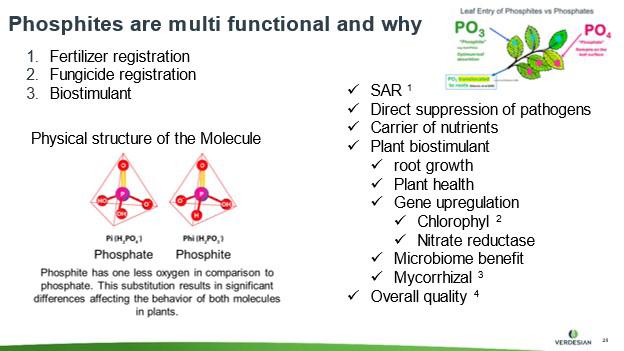
acts as a priming agent of several plant defense responses. Excellent reviews on the use of Phi to control or reduce the severity of selected plant diseases have been published. Phi-based fungicides often are labeled as fertilizers because of signi ficantly less complex and costly regulatory approval processes required for fertilizers compared to fungicides. Use of Phi as a fungicide is primarily targeted to control of oomycete pathogens like those of Phytophthora but has been shown to control many others. In studies, growth of a Phi-sensitive strain was inhibited regardless of phosphorus supply, whereas resistant strains were inhibited by Phi only under low Pi levels. Phi is effective in controlling root and crown rot caused by Phytophthora, and researchers reported a linear reduction in the severity of downy mildew and a signi ficant improvement in soybean with an increase. Signi ficant Phi control of Phytophthora disease in citrus may be achieved through both soil and foliar applications. Soil-applied Phi was more effective in controlling citrus root rot. In addition, some nematode control has been documented.




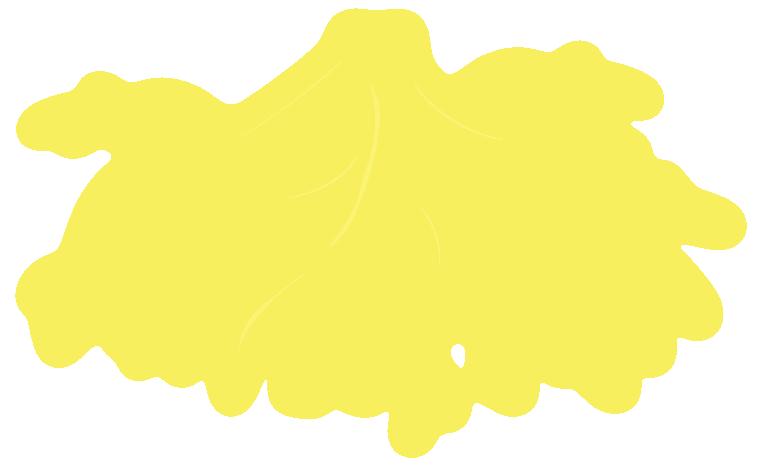

The concentration of Phi at the infection site is key. At lower levels of concentration, antifungal metabolism can be triggered, and at higher concentration, Phi can inhibit fungal growth. Ink disease in walnuts was significantly reduced through some treatment methods. Foliar-applied Phi has been successful in controlling pecan scab. Phi has also shown it can be effective in crown rot on peppers. Fungicides containing Phi can suppress foliar and soilborne diseases. With foliar diseases, repeated applications are frequently needed as Phi should be present at the time infection occurs. In contrast to non-systemic fungicides (e.g., mancozeb) labeled for oomycetes, Phi is readily translocated throughout the plant, which is especially advantageous for disease control in potato tubers and other underground plant tissue in potatoes. Phi has been foliar applied during the growing season or sprayed on potatoes after harvest both with excellent fungal disease control.
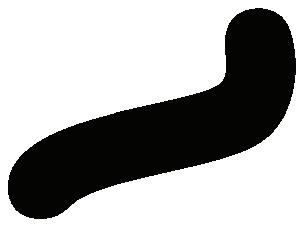


The esteemed Crop Consultant Conference, organized annually by the Progressive Crop Consultant Magazine, is slated to take place this year in Visalia, California. This two-day event, scheduled for September 27 and 28, promises an engaging array of live presentations, a trade show, and dual tracks for DPR and CCA continuing education credits.

Over the years, the Crop Consultant Conference has solidi ed its standing as a premier event in the San Joaquin Valley. Each September, it brings together Pest Control Advisors and Certi ed Crop Advisors to learn, network, and share best practices. This year, the event's organization and content delivery will be a collaborative e ort, with JCS Marketing, Inc., the publisher of Progressive Crop Consultant Magazine, co-hosting alongside the Western Region Certi ed Crop Adviser (WRCCA) and its sponsors.
The symposium's extensive agenda covers topics as diverse as pest management in grapes, citrus, and tree nut crops, innovations in pesticide application technologies, safe application procedures, and fumigation alternatives. Furthermore, the WRCCA will facilitate valuable Certi ed Crop Advisor (CCA) continuing education sessions on interpreting nutrient analysis lab reports, the application of biologicals and biostimulants, and the distinctive features and advantages of various potassium sources.
As a highlight of the conference, WRCCA will present the coveted CCA of the Year Award and disclose its scholarship recipients. Early bird registration fees for this comprehensive two-day event are currently set at $225, with the price set to increase after July 31, 2023. To secure your attendance, please pre-register at progressivecrop.com/conference. This year's Crop Consultant Conference promises to be an informative and engaging event, o ering the latest insights and advancements to professionals in the eld.
CO- HOSTED BY:
HOSTED BY:
Interestingly, phosphite has been shown effective against summer decline in creeping bent grass by pythium. Root and shoot growth improvements have been observed in turf management along with good control on dollar spot. Additionally, positive control of pythium in bluegrass was observed. Pythium blight suppression due to Phi treatments on perennial ryegrass and creeping bent grass and anthracnose basal rot on an annual bluegrass were reported.
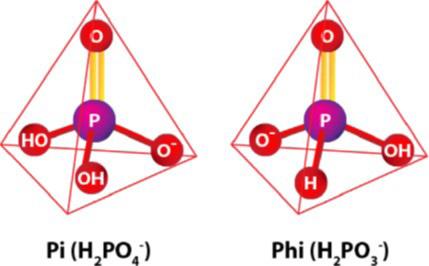
The benefits of Phi in the control of numerous diseases have been researched for years. The number of research reports is too numerous to go into in a short review. I encourage PCAs to research this effective tool on their own and find the fit in the crops they manage. We need every tool at our disposal, and Phi is proven to be effective through research. I caution to use Phi products correctly and beware as all are not created equal. Without special stabilization, they do not mix well with metal micronutrients or metal-containing fungicides and pesticides. There is currently technology that allows you to mix phosphites safely and effectively. Go to the following website to learn more about the special patented technology that can stabilize your phosphite and allow safe tank mixing and complete efficacy of applied products: vlsci.com/ products/nutri-phite/.
Controls that have been reported:
• Apple Mouldy core, Alternaria alternate
• Avacado Dieback, Phytophthora cinnamomi
• Banksia Dieback, Phytophthora cinnamomi
• Bentgrass Summer decline, Pythium
• Cabbage Clubroot, Plasmodiophora brassicae
• Chestnut Ink disease, Phytophthora cambivora
• Cucumber Damping-off, Pythium ultimum
• Grape Downy mildew, Plasmopara viticola
• Lupin Dieback, Phytophthora cinnamomi
• Maize Downy mildew, Peronosclerospora sorghi
• Orange Brown rot, Phytophthora citrophthora
• Papaya Fruit rot, Phytophthora palmivora
• Pecan Scab, Fusicladium effusum
• Pepper Crown and root rot, Phytophthora capsici
• Potato Late blight, Phytophthora infestans

• Potato Pink rot, Phytophthora erythroseptica
• Potato Bacterial soft rot, Erwinia carotovora
• Soybean Downey mildew, Peronospora manshurica
• Strawberry Leather rot, Phytophthora cactorum
• Tangelo Brown spot, Alternaria alternata
• Tobacco Black shank, Phytophthora nicotiana
References
Understanding the Phosphonate Products - Penn State Extension extension.psu.edu


Jan 1, 2023 ... Phosphonate fungicides and fertilizers are absorbed by plants and incorporated into cells as phosphite ions (H2PO3-). The fact that this ion ...
Phosphites Fungicide Products for Golf Courses
www.golfventures.com
Phosphite treatments works by boosting the turf grasses own natural defenses and thereby allowing susceptible plants to survive infections. Most turfgrass ...
Review of Phosphite as a Plant Nutrient and Fungicide MDPI www.mdpi.com
Aug 30, 2021 ... Phosphite (Phi)-containing products are marketed for their antifungal and nutritional value. Substantial evidence of the anti-fungal ...
Phosphite (Phosphonate) fungicide treatment - Chemjet www.chemjet.co.uk
Phosphite salts can be used as a biodegradable fungicide to protect plants against Phytophthora dieback. It is usually applied as potassium phosphite, ...
Study 1: Phosphite fungicides and fertilizers and contact fungicides
www.gcmonline.com
Not applicable phosphite standard phosphorous acid potassium phosphite. 70.5 grams/liter. 30.9 fluid ounces. 0.17. Acros Organics. Not applicable.
Understanding the Phosphonate Products – Penn State Plant d2j31icv6dlhz6.cloudfront.net
group of turfgrass products known as phosphonates (potassium phosphite, phosphorous ... Phosphonate fungicides and fertilizers are absorbed by plants and ...
Clarification on Phosphite Materials | UGA Pecan Extension site.extension.uga.edu

Mar 23, 2020 ... Dr. Tim Brenneman first began testing phosphite materials on pecan primarily ... should be tank mixed with another fungicide for nut scab.
Association phosphite x fungicide: protection against powdery ... link.springer.com
Mar 22, 2022 ... Phosphite-based formulations are used as fungicides, biostimulants, and fertilizers (Gómez-Merino and Trejo-Téllezb 2015). Phosphites can act ...
Phosphite (phosphorous acid): Fungicide, fertilizer or bio-stimulator?
www.tandfonline.com
Phosphite (Phi), a reduced form of phosphate (Pi), is widely marketed as either a fungicide or fertilizer or sometimes as a biostimulant. This is ...
Phosphites For Lawns - Fertilizer Or Fungicide? - YouTube www.youtube.com
Jul 15, 2021 ... Phosphites garner wide acclaim in the professional turfgrass world; however, with their appearance in lawn care - a series of questions ...

Comments about this article? We want to hear from you. Feel free to email us at article@jcsmarketinginc.com
What is Anti-Stress 550®?
When to apply Anti-Stress 550®?
When is Anti-Stress 550® most e ective?
A foliar spray that creates a semi-permeable membrane over the plant surface.
Optimal application period is one to two weeks prior to the threat of high heat.
The coating of Anti-Stress becomes e ective when the product has dried on the plant. The drying time of Anti-Stress is the same as water in the same weather conditions.
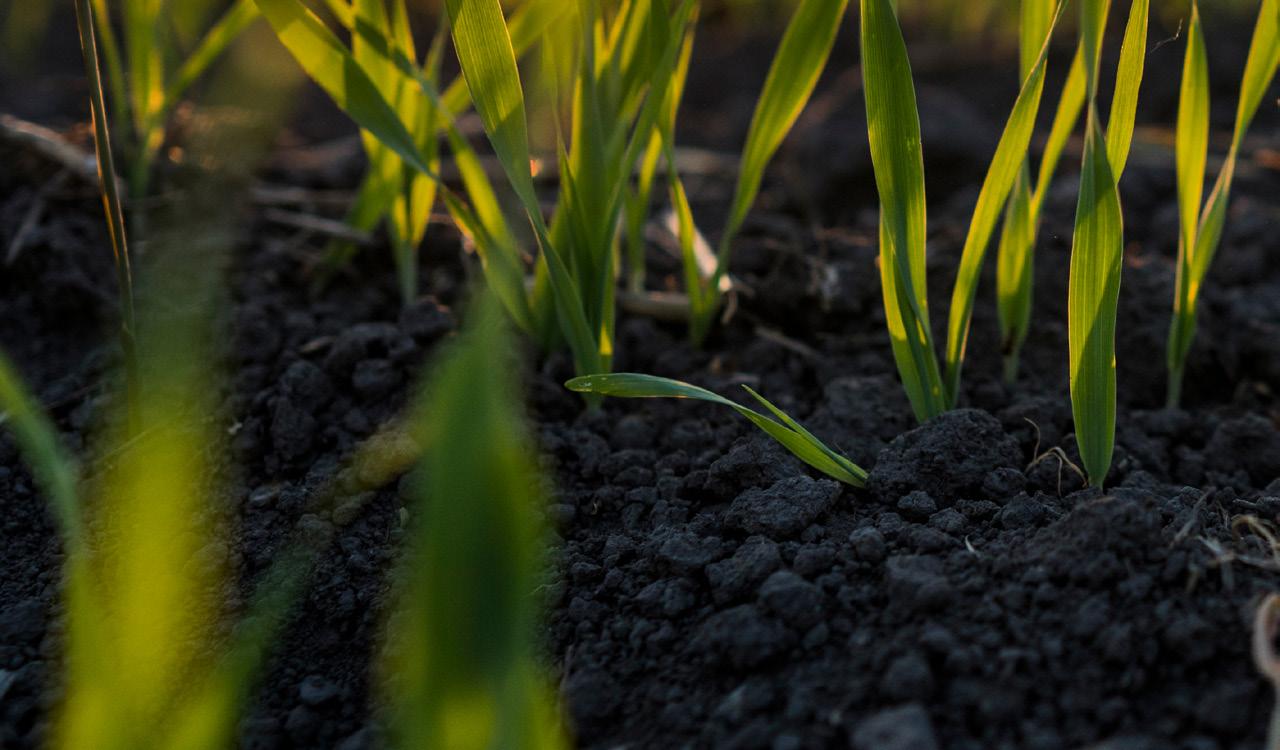 By VERN JOHNSON | CCA, President, Arizona Ag Solutions
By VERN JOHNSON | CCA, President, Arizona Ag Solutions

There is no denying now the fact humic and fulvic acids are not snake oils, but rather an important pillar to all crop nutrition and protection programs. It is important to fully understand how the two products differ and how each has a valuable place in the field, no matter the crop. To make sense of this, we must ask a few important questions about humic and fulvic acids to have a better fundamental understanding of them and how crop advisers and growers look at the use of these products in a matter that makes sense agronomically. With current budget constraints, when do humic and fulvic products make the most sense? What constitutes the right choice of product? All very important questions to ask of the humic and fulvic acids of final choice.
There is both a dry and a liquid option when it comes to humic acid products. This leaves a perfect flexibility in options to meet needs of growers in nearly all situations. Humic acid chains can vary in size and length depending on quality. So inherently they have a certain place where they fit.
Dry humic acid, commonly known as Leonardite, is a black to brown soft and soluble product that can be spread alone or blended with most fertilizers to improve soil conditions and nutrient availability. Adding dry blended Leonardite to dry phosphate fertilizers is a great way to improve availability of phosphates upfront, but it’s also a great tool in remediation of sodic ground.
Liquid humic acid should be rich in color. No matter the quality, humic acid can be littered with solids and particulates to plug screens and nozzles. This can leave a grower or advisor feeling frustrated, whether from plugging or what’s left in the product container. Find a high-percentage humic that has been refined in some matter. These products exist and are made in a variety of ways to be clean and particulate-free. You should have a humic acid product you can confidently be able to spray or run through a drip system with no issue. While I do struggle professionally with using humic acid as a sprayable product, it is widely used in ‘high-value’ foliar sprays, and I feel the value there comes from the fulvic acid content in that
humic product to provide the efficacy sought in the addition to the spray tank. Additionally, humic alone can play a role in buffering the tank components, leading to more successful sprays.
Fulvic Acid
Fulvic chains are small, much smaller than that of humic acids. That molecule size allows for it to pass through the leaf with ease while acting as a chelating agent to allow the tank mix partner into the leaf. So, fulvic has a definite use with foliar nutrients, translaminar and systemic insecticides, fungicides and, most importantly, herbicides. As a crop adviser, the last four to five seasons I have written into most herbicide recommendations a fulvic acid to aid in efficacy. It took me some time to get on board, but I have seen a significant increase in efficacy in translaminar insecticides and in use with herbicides. This has helped greatly in areas where I question herbicide resistance. The efficacy increase is noticed, and from my preferred source of product, the cost is around $1.25/acre.
Search for humic and fulvic products that meet the intersection of quality and
Humic and fulvic acid comprise the ‘organic acid’ category of plant biostimulant products, with both being used to enhance plant uptake of nutrients and other foliar chemicals.

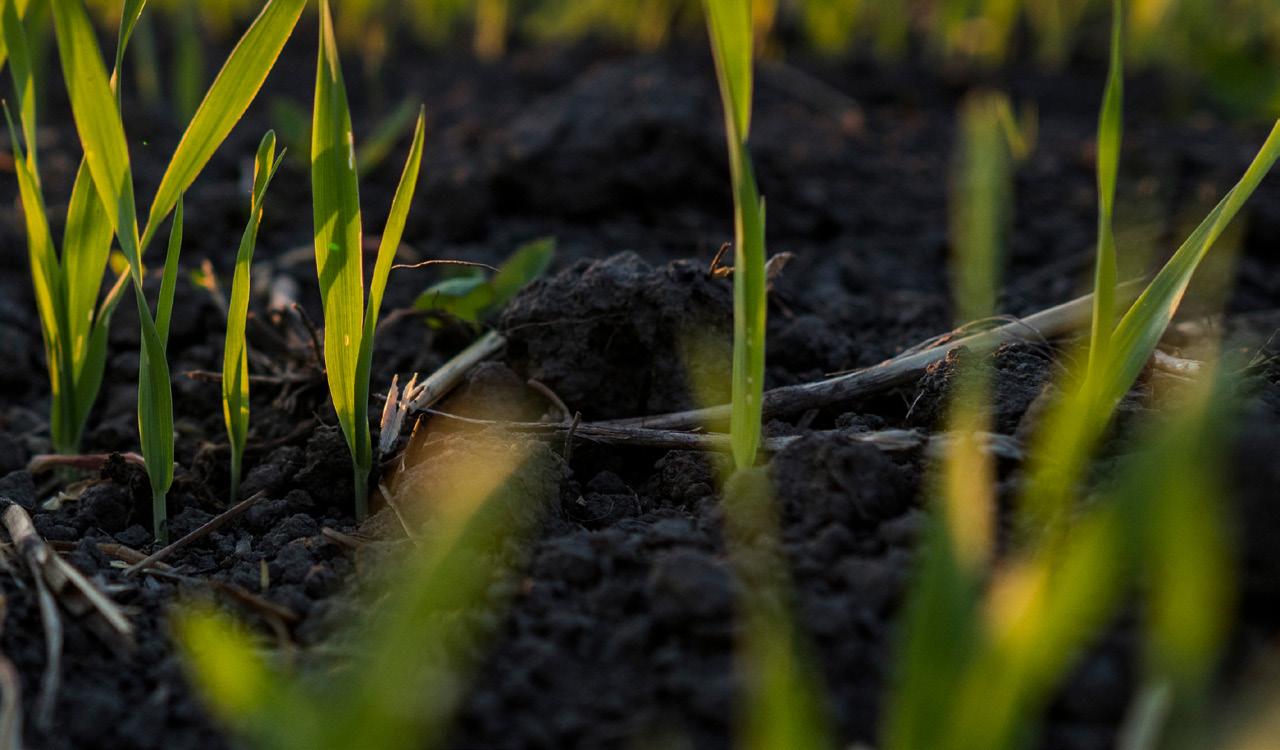
cost. Just because a product is expensive does not always make it better. Being at a lower price point does not make it inferior. A clean and quality product is the key, more so for your humic acid choice over the fulvic product choices, which are normally refined, clean and pure. Challenge your provider to show the tests and testing methods used to establish quality.
Comments about this article? We want to hear from you. Feel free to email us at article@jcsmarketinginc.com
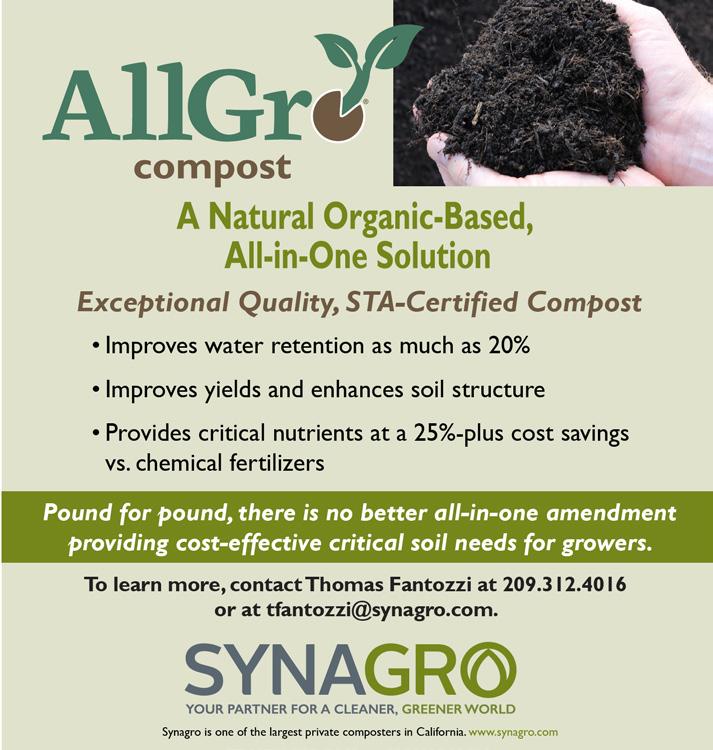
Leafroll is the most widespread and devastating viral disease of grapevine worldwide. It reduces yield, delays fruit ripening, increases titratable acidity, lowers sugar content in fruit juices, modifies aromatic profiles of wines and shortens the productive lifespan of vineyards. The economic cost of leafroll is estimated to range from $12,000 to $92,000 per acre of ‘Cabernet Sauvignon’ in California (Ricketts et al. 2015).
Grapevine leafroll-associated virus 3 (GLRaV 3) is the most dominant virus in leafroll-diseased vineyards. This virus is phloem-limited and transmitted by vegetative propagation and grafting as well as by several species of mealybugs. Mealybugs are sap-sucking insects and pests of grapes. At high densities, mealybugs can cause complete crop losses, rejection of fruit loads at wineries and death of spurs, although small infestations may not inflict significant direct damage. Several mealybug species
feed on grapevines in California vineyards, including vine mealybug (Planococcus ficus), grape mealybug (Pseudococcus maritimus), obscure mealybug (Pseudococcus viburni) and longtailed mealybug (Pseudococcus longispinus) (Daane et al. 2012). Vine mealybug is an invasive species and the most damaging of the mealybugs that occur in California vineyards. Unassisted, mealybugs have limited mobility, but immature instars (crawlers) can be dispersed over long distances by wind and other means.
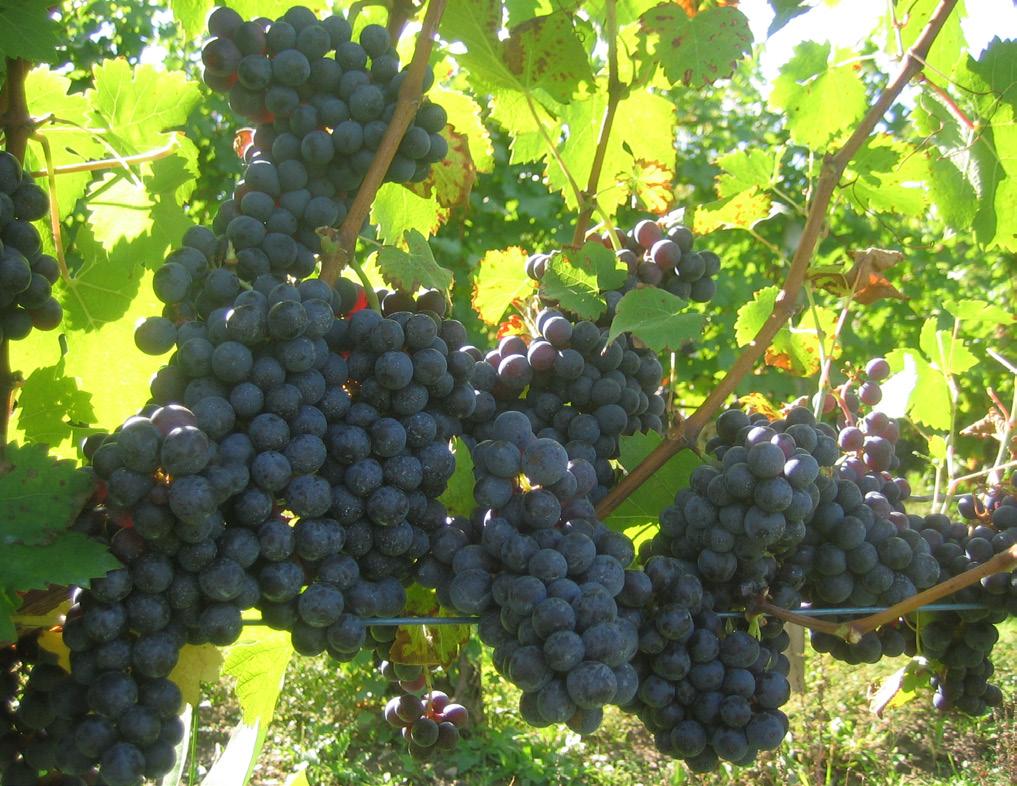
GLRaV-3 is acquired within one hour or less when instar mealybugs feed on infected grapevines. The virus is transmitted in a similar short time to healthy grapevines (Tsai et al. 2008). Following inoculation of healthy grapevines, it takes at least three months for GLRaV-3 to be detected in inoculated grapevines using laboratory-based diagnostic assays and one year for inoculated vines to exhibit typical leafroll disease symptoms in the vineyard
(Blaisdell et al. 2016). In most diseased vineyards, the dynamics of leafroll spread is influenced by virus incidence and mealybug population density (Arnold et al. 2017, Cooper et al. 2018). In addition, the two adjacent vines to an infected vine are more likely to become infected over time than their counterparts located across the row, suggesting a predominant within-row virus spread and a spatial dependence for secondary spread (Bell et al. 2018).
There is no cure for leafroll in diseased vineyards. However, the disease can be managed by reducing the number of infected vines and by controlling mealybug vector populations. For example, the elimination of diseased vines (a strategy known as roguing) and their replacement with clean vines derived from virus-tested nursery stocks that test negative for economically relevant viruses, including leafroll-associated viruses,
reduce the incidence of GLRaV-3 and limit its secondary spread in vineyards (Bell et al. 2018, MacDonald et al. 2021).
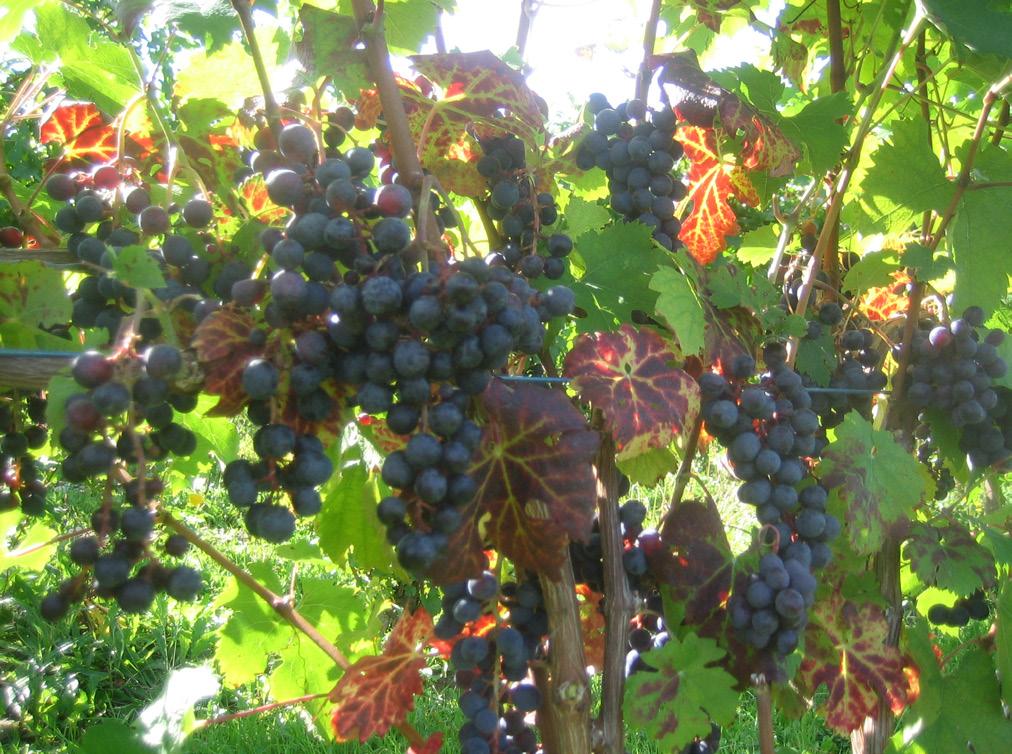
Modelling leafroll disease spread in relation to economic factors predicted when roguing diseased vines, if disease prevalence is less than 25% (Ricketts et al. 2015) and two immediate within-row neighboring vines on each side, regardless of their disease status (for a total of five vines in the case of one infected vine), a strategy referred to as spatial roguing is more effective at reducing the level of virus inoculum in a diseased vineyard than roguing only diseased vines (Atallah et al. 2015). This strategy was inspired by the fact that 1) mealybug crawlers are more efficient vectors of leafroll viruses than adults; 2) crawlers are more likely to move along rows than between rows; 3) leafroll spread predominantly occurs at a short spatial scale; 4) a healthy-looking vine that is adjacent to a diseased vine may be infected without exhibiting disease symptoms; and 5) disease symptoms are only apparent at least one year after inoculation by viruliferous mealybugs (Blaisdell et al. 2016). Predictive models suggested that spatial roguing targeting symptomatic vines and their four immediate neighbor vines, two on each side, would be of statistically significant greater economic value than spatial roguing targeting symptomatic vines and their two immediate neighbor vines, one on each side. Simulations further predicted that a nonspatial strategy targeting only diseased
Oregon State has developed an Aglime Score which is basically an efficiency rating. Particle size or mesh size is key to this rating and is the primary indicator of reactivity. Studies have shown that pulverized limestone smaller than 40 mesh (size of table salt) are considered 100% effective and are the quickest to dissolve in the soil to release calcium and adjust soil pH.


Mildly acidic water and soil conditions will dissolve finely ground limestone. For example, the pH of rainwater in California is typically around 5.7, which is enough to dissolve our aglime that is broadcast. Our pulverized limestone products average 85% passing 100 mesh (diameter of a human hair). Remember aglime quality increases when particle size decreases.
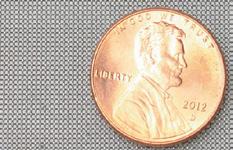
vines is less effective and more costly than spatial roguing (Atallah et al. 2015).
We applied spatial roguing in a ‘Cabernet franc’ vineyard with overall low leafroll virus prevalence (5%) and a low grape mealybug population density in New York and tested its effectiveness at reducing the incidence of leafroll disease and slowing virus spread (Hesler et al. 2022). Four treatments were applied to select vine panels from 2016 to 2021: (1) spatial roguing only, (2) spatial roguing in combination with insecticide applications targeting grape mealybugs, (3) insecticide applications only (no spatial roguing), and (4) no spatial roguing and no insecticide intervention (the untreated control). Results showed that virus incidence was reduced from 5% in 2016 to less than 1% in 2020 to 2021 in both spatial roguing treatments. Among vines in the insecticide-free, non-rogued control treatment, virus incidence increased from 5 to 16% from 2016 to 2021 (Hesler et al. 2022). Insecticides applied in 2016 to 2021 helped significantly reduce grape mealybug populations to near zero annually, while populations in the untreated control vines were 57- to 257-fold higher during the same period (Hesler et al. 2022). This work validated spatial roguing as a leafroll disease management response in a vineyard with low disease incidence and low grape mealybug abundance.
Spatial roguing adds to the overall cost of vineyard maintenance. Revenue losses directly related to spatial roguing were estimated in our study at $5,565 per acre over six years (Hesler et al. 2022). These estimates agreed with earlier predictions and underscored the economic value of spatial roguing, despite added costs relative to the costs of maintaining a healthy vineyard, particularly when considering a scenario of no intervention, for which $10,000 to $15,750 losses per acre were calculated over a 25-year lifespan of a ‘Cabernet franc’ vineyard in New York (Atallah et al. 2012). The cost/benefit analysis of roguing may need to be evaluated
by individual vineyard owners who are willing to adopt this leafroll disease management strategy. Critical to the success of roguing is the health status of the replants. Replants should be sourced from nursery vine stocks (scions and rootstocks) that have been extensively tested for viruses, including leafroll viruses, and shown to be clean (Bolton 2020).
In the future, it would be interesting to test the effectiveness of spatial roguing in California vineyards where mealybug population densities are consistently higher than in New York vineyards. Similarly, it would be interesting to compare the efficacy of spatial and nonspatial roguing approaches as a response to leafroll disease management. Of equal interest would be a study to test whether a sequential roguing strategy based first, for instance, on spatial roguing to drastically reduce sources of virus inoculum, and then on nonspatial roguing to limit secondary spread would be of value. If carried out in different vineyards with distinct disease prevalence, rate of spread and mealybug species and abundance, such research would inform the best approach for leafroll disease management both from a biological and economical perspective.
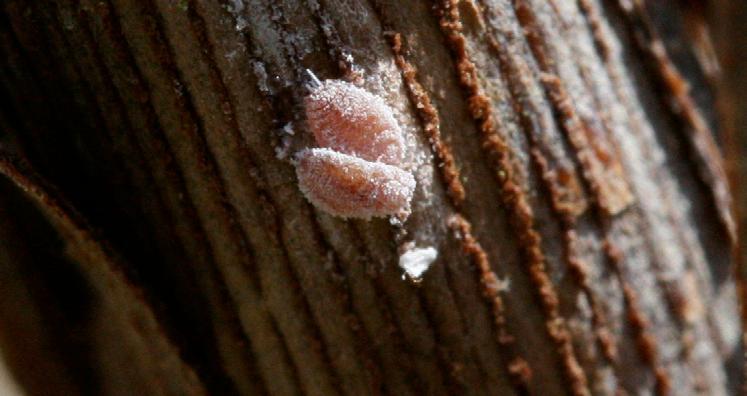
A six-year experiment in a commercial ‘Cabernet franc’ vineyard with low disease prevalence and low-density grape mealybug populations in New
York showed that spatial roguing and the combination of spatial roguing and insecticides significantly reduced the percentage of infected vines. By comparison, virus incidence among vines in the untreated control vine panels where roguing was not implemented and no insecticides were applied increased from 5% to 16% during the same period. This study was the first to demonstrate the effectiveness of spatial roguing at reducing the incidence of leafroll disease and limiting its spread. It will be interesting to see whether our results on spatial roguing are reproducible in other vineyards of New York, and in vineyards of other grape growing regions of the world, including in California, where many more mealybug species, including the vine mealybug, are of concern and reside at higher populations.
Arnold K, Golino DA and McRoberts N. 2017. A synoptic analysis of the temporal and spatial aspects of grapevine leafroll disease in a historic Napa vineyard and experimental vine blocks. Plant Dis 107:418-426.
Atallah S, Gómez M, Fuchs M and Martinson T. 2012. Economic impact of grapevine leafroll disease on Vitis vinifera cv. Cabernet franc in Finger Lakes vineyards of New York. Am J Enol Vitic 63:73-79.
Atallah S, Gómez M, Conrad JM and Nyrop JP. 2015. A plant-level, spatial, bioeconomic model pf plant disease diffusion and control: grapevine leafroll disease. Am J Agri Econ 97:199-218.
Bell VA, Hedderley DI, Pietersen G and Lester PJ. 2018. Vineyard-wide control of grapevine leafroll-associated virus 3 requires an integrated response. J Plant Pathol 100:399-408.
Blaisdell GK, Cooper ML, Kuhn EJ, Taylor KA, Daane KM and Almeida RPP. 2016. Disease progression of vector-mediated Grapevine leafroll-associated virus 3 infection of mature plants under commercial vineyard conditions. Eur J Plant Pathol 146-105-116.
Bolton SL. 2020. What every winegrower should know: viruses. Lodi Winegrape Commission. pp. 138.
Cooper ML, Daugherty MP, Jeske DR, Almeida RPP and Daane KM. 2018. Incidence of grapevine leafroll disease: effects of grape mealybug abundance and pathogen supply. J Econ Ent 111:1542-1550.
Daane KM, Almeida RPP, Bell VA, Walker JTS, Botton M, Falladzadeh M, Mani M, Miano JL, Sforza R, Walton WM and Zaviezo T. 2012. Biology and management of mealybugs in vineyards. In Arthropod Management in Vineyards: Pests, Approaches, and Future Directions, N.J. Bostanian, ed. (Springer), pp. 271-307.
Hesler S, Cox R, Loeb G, Bhandari R, Martinson T and Fuchs, M. 2022. Spatial roguing reduces the incidence of leafroll disease and curtails its spread in a ‘Cabernet franc’ vineyard in the Finger Lakes region of New York. Am J Enol Vit 73:227-236.
MacDonald, SL, Schartel TE and Cooper ML. 2021. Exploring grower-sourced data to understand spatiotemporal trends in the occurrence of a vector, Pseudodoccus maritimus (Hemiptera:
Pseudococcidae) and improve grapevine leafroll disease management. J
Ricketts KD, Gómez MI, Atallah SS, Fuchs MF, Martinson T, Smith RJ, Verdegaal PS, Cooper ML, Bettiga LJ and Battany MC. 2015. Reducing the economic impact of grapevine leafroll disease in California: identifying optimal management practices. Am J Enol Vit 66:138-147.

Tsai C-T, Chau J, Fernandez L, Bosco D, Daane KM and Almeida RPP. 2008. Transmission of grapevine leafroll-associated virus 3 by the vine mealybug (Planococcus ficus). Phytopathol 98:1093-1098.
Comments about this article? We want to hear from you. Feel free to email us at article@jcsmarketinginc.com
Provides Calcium and Chitin from Crab, complexed with amino acids from fish.
Pacific Gro helps growers improve soil health and improve nutrient uptake for better crop performance.
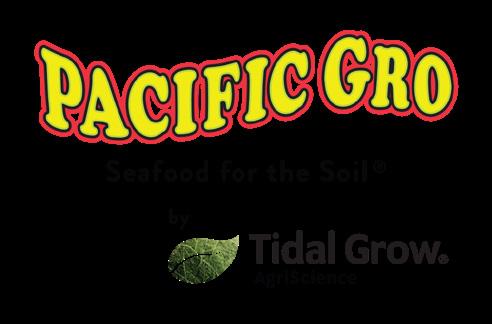
Crop resilience against disease and pest pressure can be achieved with a biological program and balanced nutrition.
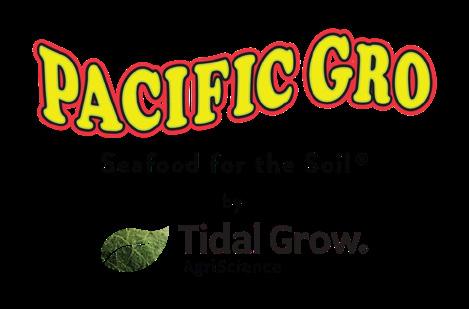
Crop consultant and crop advisor are one in the same. We provide educated advice to farmers about all aspects of farming. Each of us has different strengths and knowledge levels. I personally know consultants who focus on a single crop such as grapes or almonds. Others deal with numerous crops but focus on a category: tree nuts, row crops, field crops, tree fruit or combinations such as tree fruit and vine crops.
As a crop advisor, you may choose to focus on pest management. Others may focus on soil and nutrition, and some stick to irrigation management. To provide a complete crop advisor service, we need to be knowledgeable about more than plants and soil. We need to hold ourselves as authorities on any aspect of farming that affects our growers. We need to be able to advise on the type of crop grown and help decide if it is the best suited crop for the area, climate, soil and water conditions, and weigh in on the economics and long-range business plans of growers.
You should have formal education and training in the field you decide to specialize in. A Bachelor of Science degree or even higher degree in agronomy-related science would be helpful, even a lesser associate degree coupled with years of experience working in agriculture can serve your customers well. I believe in our field we should never stop learning and growing our knowledge base. Attend continuing education classes often to stay up to date with ongoing changes that face the ag industry. Prior experience working in agriculture, such as internships at a farm, nursery or agriculture business, can give you a leg up.
Responsibilities you may have as a crop advisor can include:
• Know the metabolism and growth stages of every crop you will consult on.
• Keep agronomic and financial records of customer accounts.
• Scout crops for pests and diseases that may arise during various parts of the growing season.
• Build relationships with growers that you service.

• Collaborate with other advisors in your area to understand disease and pest outbreaks in the area.
• Work with marketing managers to develop marketing plans and pricing strategies.
• Make recommendations to growers on actions that may need to be taken when problems arise.
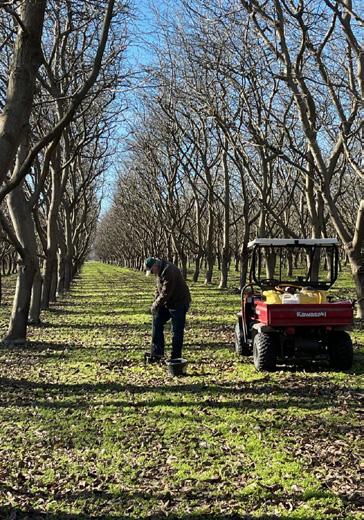
• Provide training to growers in your area.
• Identify potential weed problems and offer suggestions on products.
• Utilize knowledge and understanding of weeds and herbicide modes of action to determine the most suitable treatment.
• Suggest crops and seeds to be used in the next growing season.
• Supervise chemical and fertilizer applications.
If you are going to advise on crop protection, carry the license and credentials to do so. A PCA license is mandatory in California for you to provide written recommendations. Several categories are available, and if you are going to be an independent, I recommend you pass tests in all of them.
I have carried both my PCA license and my CCA certification. I extended that to include being a California Nitrogen
Management Specialist and even further by becoming a CPAg (Certified Professional Agronomist). Many other certifications are available including being certified in Sustainable Agriculture. As a crop advisor, you could choose to work part-time or full-time. You have the flexibility to work for retailers, manufacturers, corporate-owned farms, privately owned farms or a consulting firm. If you choose crop advisor as your career, do everything in your power to stay informed and up to date for the benefit of your customer/client.
Another critical item to build your business is being involved. By belonging to professional societies as well as community associations, you expand your hori-
zon. Just a few professional organizations and associations are:
• American Society of Agronomy
• Crop Science Society of America
• Entomological Society of America
• Soil Science Society of America
• Weed Science Society of America
Reach out and become involved with the local farm bureau and crop associations to help inform growers of marketing issues, pending disease and pest pressures, labor laws and regulation changes. If you stay informed, you could help your grower avoid potential fines and penalties. Crop conferences are a great way to network, attend education classes and visit vendors to see what new tools are available or are coming soon. If you can spare the time, a very rewarding opportunity comes with serving on the board of directors for PCAs and CCAs. Both CAPCA and Western Region CCA are active and strive to bring up-to-date education and information to growers and members.
In speaking to some independent crop advisors, it became apparent that one weakness in developing your business was lack of information. The industry often focuses on the larger dealers and their PCA and CCA staff. Not enough training events or information is focused on the lone independent. Also, independents seldom have warehousing or multiple office locations. This is where having a supply of chemicals and fertilizer becomes crucial. An independent is in direct competition for acres and growers with larger, well-funded sales organizations. Finding competitive pricing for materials can become an issue.
When I visited with Fred Strauss, a retired independent, he gave me advice for those wishing to grow and maintain their business, noting “trust is the number one thing of importance. Gaining the trust of a grower and keeping that trust means they will keep using your expertise. Number two is consistency. The grower needs to know how often you will
make field visits, when you will be on their property, and that you will review your findings and recommendations constantly.”
Strauss continued by discussing sustainability and the knowledge to make your grower meet or qualify for the label of being sustainable. Knowing the difference between being organic and sustainable and relaying this message is often clouded.
Strauss offered three suggestions for success. “Every day you show up for work, you must never forget the ultimate goal is to make your customer money.” He went on to discuss customer retention. The hardest new customer to get is a happy customer. The easiest to lose is the unhappy one. If a customer is unhappy or disappointed with your knowledge, dedication, honest advice and consistent performance, they are more likely to look elsewhere. If the same is true about how they feel toward another crop advisor, it could open a door for you.
I have always told consultants one of the most important things for succeeding as a crop advisor is feet on the ground. Don’t overextend yourself and reduce your efficiency. Hire some help like an intern to gather soil or tissue samples. Train them adequately and monitor their performance. Get the experience you need before you attempt to become an independent crop advisor. I personally believe it should be five years minimum. Earn your reputation before you try and sell it. Being your own boss can be appealing but make sure you are ready. Do you have the experience? Do you have the education and training? Do you have errors and omissions protection? Is your business model set up correctly? Do you have potential acres to seed your future growth? All good questions to ask before you start to grow a business.
Comments about this article? We want to hear from you. Feel free to email us at article@jcsmarketinginc.com
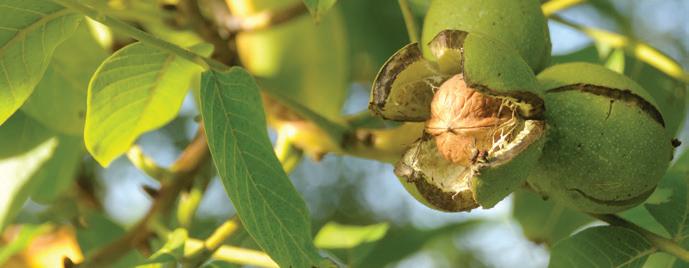
• Mites, controls all life stages including eggs
• Reliable broad spectrum pest control
• Rust, Powdery Mildew, Botrytis, and more
• Multi-site activity
• Ground or aerial applications
• IPM compatible – safe on beneficial predators
• Excellent crop safety
Spotted wing drosophila (SWD) is an invasive fruit fly species native to Asia. It was first detected in the U.S. in California in 2008 and has since spread to many parts of the Americas and Europe. SWD is a serious pest of cherry and soft-skinned fruits such as raspberry, blueberry, strawberry and blackberry. Unlike vinegar flies that attack overripe or damaged fruit, SWD females can lay their eggs in healthy, ripening cherry fruit using their serrated ovipositor. The larvae hatch and feed on the fruit, making it soft, discolored and unmarketable.
SWD has a relatively short life cycle with adults living for three to four weeks. One female can lay over 300 eggs that can hatch in two to three days, and the larvae complete their development in 7 to 10 days. The pupal stage lasts 5 to 10 days, after which the adult flies emerge. SWD can have multiple generations yearly, up to 10 to 12 in warm regions. This rapid reproduction, multiple generations and high fecundity make SWD a challenging pest in cherry and other soft fruit crops.
SWD management in California involves using synthetic insecticides multiple times a year when cherry fruits become susceptible from color
development to harvest. Depending on variety and location, that period can vary from four to eight weeks. In recent years, studies have suggested a reduced susceptibility of SWD to commonly used insecticides in several crops across many states within the U.S. and Canada. In Michigan, researchers found reduced susceptibility to SWD flies exposed to malathion and spinetoram. In California, researchers found SWD populations in some strawberry and caneberry fields in the coastal area show resistance to pyrethroid, Spinosad and malathion. This resistance is believed to be due to the overuse of these insecticides, which has led to the selection of resistant SWD populations. In 2022, our preliminary study using a cherry orchard collected SWD indicated their reduced susceptibility to malathion, Spinosad and pyrethroid insecticide. We will continue to pursue confirmatory studies by testing wild flies from several California cherry orchards in the upcoming season.
Resistance to pesticides can also develop due to failure to rotate insecticides with different modes of action. Implementing integrated pest management (IPM) strategies that minimize the selection pressure on SWD populations is essential to address the issue of resistance in California berry crops.
Spotted wing drosophila management in California involves using synthetic insecticides multiple times a year when cherry fruits become susceptible from color development to harvest (photo by Larry L. Strand, courtesy UC Statewide IPM Program.)
Spotted wing drosophila management in California involves using synthetic insecticides multiple times a year when cherry fruits become susceptible from color development to harvest (photo by Larry L. Strand, courtesy UC Statewide IPM Program.)
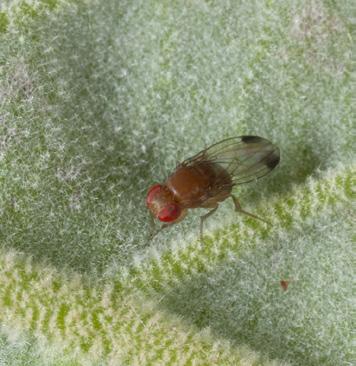
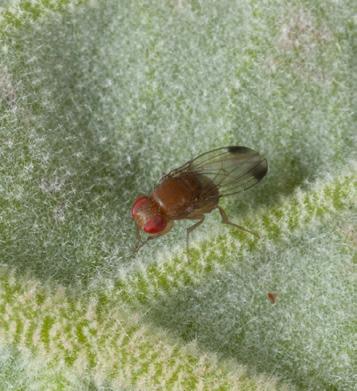
Integrating monitoring/sampling techniques with available control methods, such as cultural, physical and chemical, is vital for this pest’s long-term management.
Use sticky traps or baited traps to capture and monitor SWD populations. Place the traps in the cherry orchard and monitor them frequently to assess pest pressure in the orchard. SWD traps are commercially available from several vendors.
Assess the fruit susceptibility stage by carefully observing the orchard and detecting the susceptible stage of the fruit (i.e., color-break stage). Although SWD may be captured in the trap early, SWD can only damage ripening fruits. So, determining the right time to begin insecticide sprays helps control SWD effectively and may save an application or two.
Survey fruits for the early indicators of infestation by looking for signs of SWD infestation on the surface of the fruit. These signs include soft spots, bruising or holes in the fruit’s skin. It can be too late to protect crops, but if it’s an early stage of infestation, most of the fruits can still be protected.
Use sticky traps or baited traps to capture and monitor spotted wing drosophila populations. Traps are commercially available from several vendors (photo courtesy J. Rijal.)
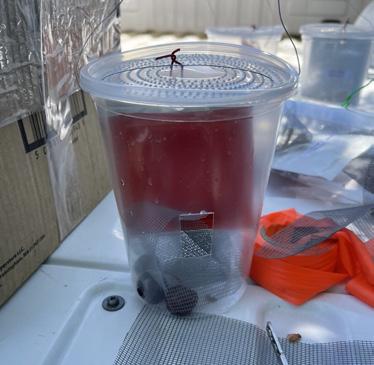
One of the primary ways to manage SWD resistance is to rotate the use of insecticides with different modes of action. This reduces the selection pressure on the SWD population and minimizes the chances of the insect developing resistance to any single class of insecticide. See this link for updated UC IPM Guidelines for SWD in cherry: ipm.ucanr.edu/agriculture/ cherry/spotted-wing-drosophila/.
Save insecticides with a short preharvest interval (PHI) for later applications to ensure the fruit is safe for the domestic and export markets as maximum residue limits widely vary among countries.
Follow all label instructions and regulations when using chemical control measures.
Effective control measures often require a combination of cultural, physical and chemical methods.
Cultural
Alternate host plants growing close to the crop can significantly increase the risk of SWD infestation. Clear out wild hosts if they are present adjacent to the cherry orchard.
Make the orchard less conducive for the SWD population. A dense canopy with poor light penetration creates high humidity conditions in the orchard, especially in the lower canopy, and that environment is more conducive for SWD flies. So, practices such as pruning improve air circulation and light penetration.
Keep the orchard clean and free of fallen fruit during the season and postharvest as these trash fruits can serve as breeding sites for SWD. Additionally, prompt cooling and storage of fruit can help prevent SWD infestations from developing during storage.
Apply insecticides when SWD populations reach a certain threshold. Insecticides should be applied when the fruit begins to ripen.
Gargoil® Insect, Mite & Disease Control targets pests including mites, aphids, thrips, whiteflies, psyllids and other soft-bodied insects. Gargoil® can also help control immature forms of larger insects such as worms and scale.
ADVANTAGES

■ Apply throughout the season, even day of harvest, no PHI
■ No limits on the number of applications per year
■ Easy-to-use plant-based product
Gargoil® for the Control of Spotted Wing Drosophila in Caneberries


Spotted wing drosophila is a serious pest of cherry and soft-skinned fruits such as raspberry, blueberry, strawberry and blackberry. Unlike vinegar flies that attack overripe or damaged fruit, SWD females can lay their eggs in healthy, ripening cherry fruit using their serrated ovipositor. The larvae hatch and feed on the fruit, making it soft, discolored and unmarketable (photo courtesy J. Rijal.)
Genetic control involves the use of genetic modification techniques, such as gene drive, gene silencing/ RNAi and sterile insect technique, to reduce the pest population. However, genetic control of SWD is still in the early stage, and there are no commercially available genetically modified strains of SWD for pest control.
Researchers have identified several potential natural enemies that can be used against SWD. The most potent one is the imported larval parasitoid wasp, Ganaspis brasiliensis of SWD, also found recently in the U.S. The wasp injects its ovipositor and lays an egg inside SWD larvae that are within the fruit. This wasp has shown high efficacy against SWD in various lab-
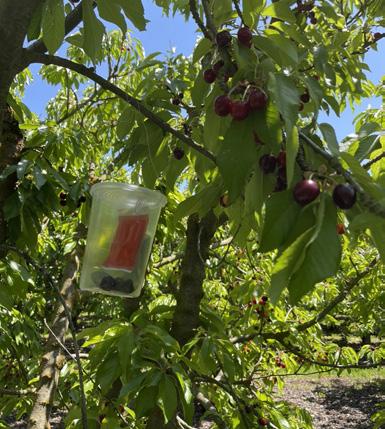


oratory and greenhouse studies and is now in field trials.


SWD populations in many regions are becoming increasingly resistant to commonly used insecticides due to the continuing reliance on chemical insecticides, highlighting the need for continued research into alternative methods for controlling SWD and for developing effective insecticides against resistant populations. While progress is being made on these fronts, integrated use of available methods, including rotating the insecticide mode of action, is still the effective way to manage SWD to slow the spread of resistance.
Comments about this article? We want to hear from you. Feel free to email us at article@jcsmarketinginc.com





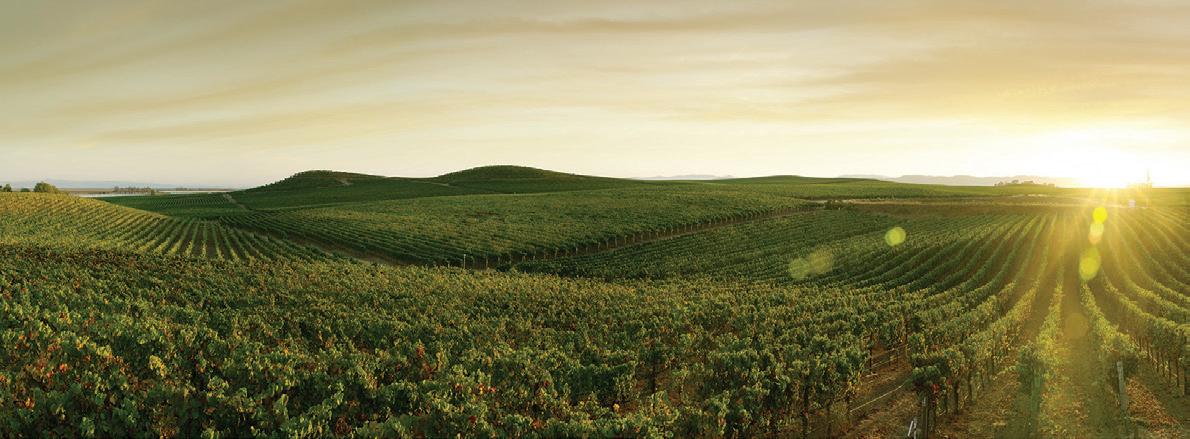








WITH MOVENTO.®













































































The same Movento® insecticide that manages red scale and nematodes also protects against Asian citrus psyllids, which can cause a devastating and fatal disease, Huanglongbing. With its unique two-way movement upward and downward, Movento provides allover protection for high-quality fruit and long-term tree health.




































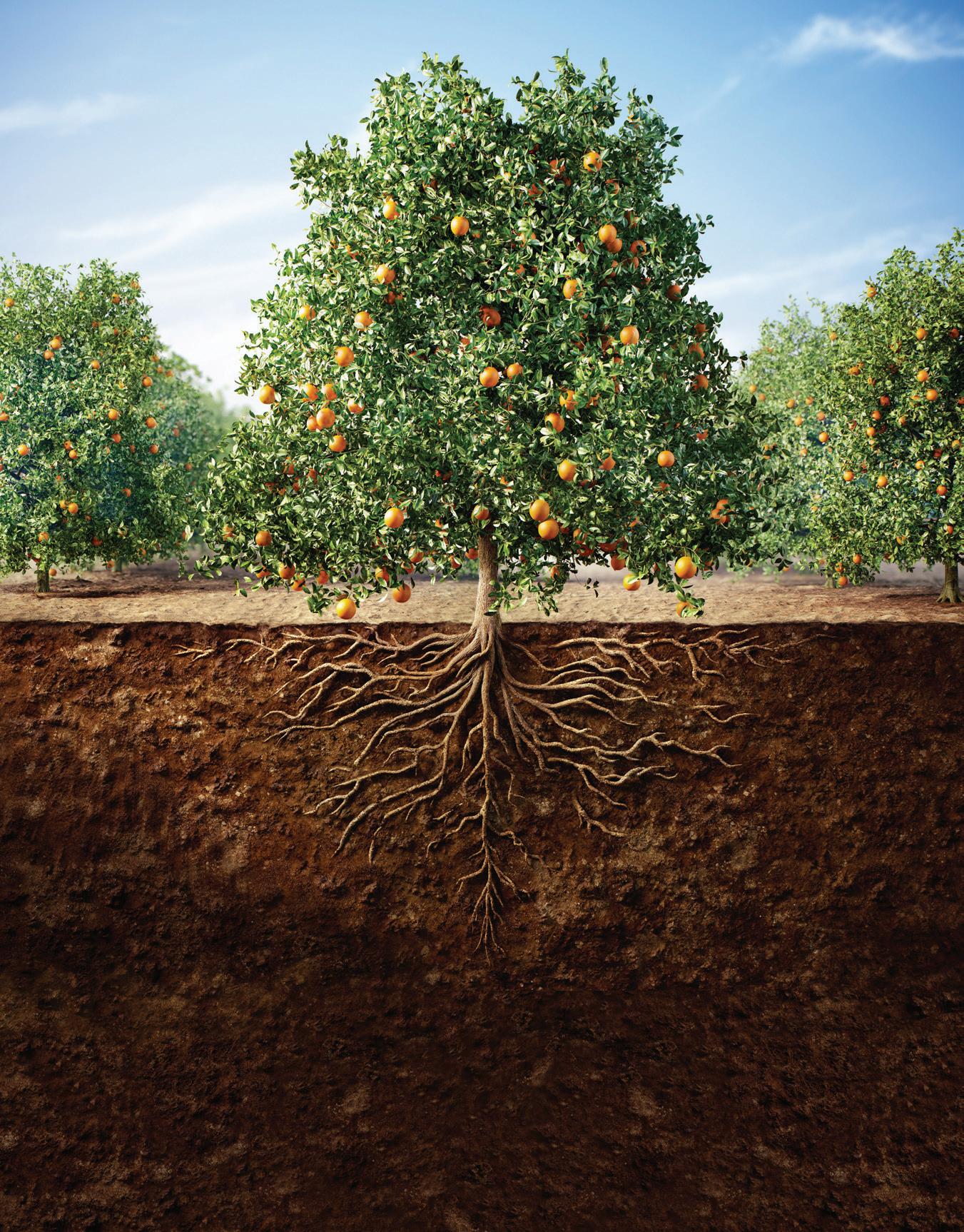
For more information, contact your retailer or Bayer representative or visit www.Movento.us.


